Synchronicity: The 14 Lenses
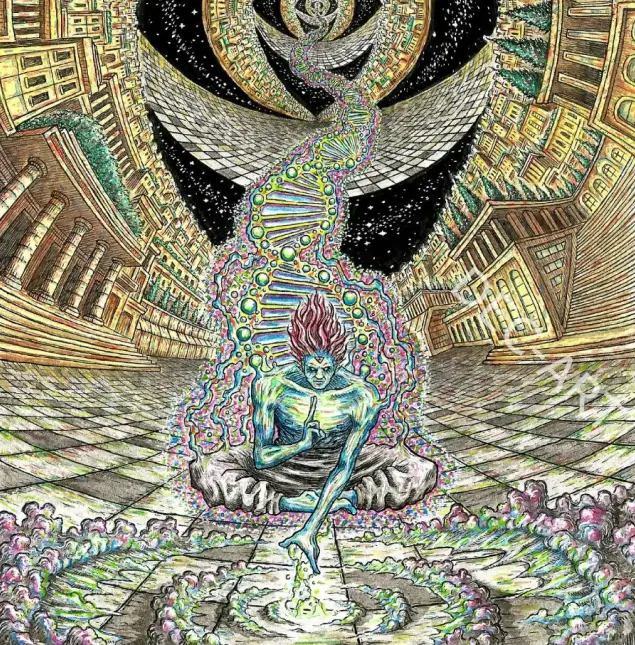
Abstract
Synchronicity is a concept introduced by analytical psychologist Carl Jung "to describe circumstances that appear meaningfully related yet lack a causal connection." Carl Jung waited until late in his career to focus on synchronicity because of its controversial and nonempirical implications – that effect does not logically follow cause, even though he first used the term publically in 1930. Among his experiments, he tallied the similarity in married couples’ astrological profiles. Mathematicians and scientists were shocked and dismayed that he would give such credence to astrology.
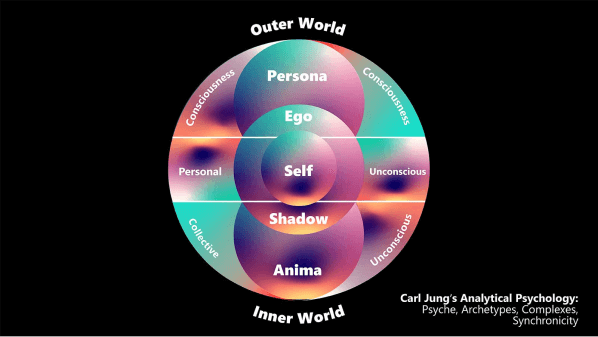
His editors urged him not to publish his 1955 monograph on synchronicity in his Collected Works, but after a long delay, in which Jung questioned the very premises of empiricism, the work was published, with few changes. In it, he cited Kammerer’s work on multiples, Schopenhauer’s work on the first cause, the work of Davies, Richey, and Hammerian on probability calculus, Wilhelm Von Scholz on how lost or stolen objects come back to their owners, Herbert Silberer’s on how chance functions from a psychological angle, and J. B. Rhine’s experiments with extrasensory perception as evidence of a force called synchronicity.
He focused on Rhine’s work, saying the experiments show that events may be meaningfully correlated but not causally correlated, and therefore meaningful coincidences have archetypal roots. Jung also worked closely with physicist Wolfgang Pauli, who was interested in synchronicity as an explanation for the behavior of atoms in quantum mechanics.
Jung defined synchronicity in several passages:
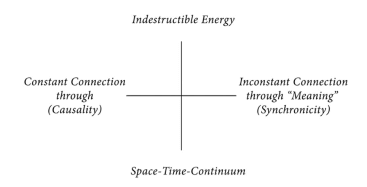
• Simultaneous occurrence of two meaningful but not causally connected events.
• A coincidence in time of two or more causally unrelated events which have the same or a similar meaning.
• The simultaneous occurrence of a certain psychic state with one or more external events which appear as meaningful parallels to the momentary subjective state and in certain cases, vice-versa.
• Synchronistic events rest on the simultaneous occurrence of two different psychic states. One is the normal, probable state (the one that is causally explainable) and the other, the critical experience, is the one that cannot be derived causally from the first.
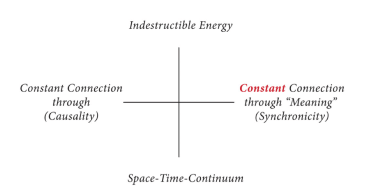
Synchronicity does not only show its effects in the present, it shows its effects in the past and the future. Synchronicity has to do with the physical principles of time, space, and causality. Jung asserted that people who are able to perceive in the present, events that occur in the future, with what is called ‘extrasensory perception’ or ‘precognition’ proves that such events are synchronistic, having to do with a relationship across time, and not synchronous, taking place at the same time. They fall into the same category whether they are separated by space or separated by time.
The two necessities for synchronicity to take place are (1) the presence of emotion and (2) an unconscious image which comes to consciousness either directly or indirectly. The melding of space and time are crucial and how the energy is transmitted is not known, and perhaps unknowable. Jung said that there is no explanation for the transmission of energy in these cases. The experience of synchronicity is indelibly interwoven with a sudden emotional recognition that something is momentous, important, consequential, and thus carries great weight. The surprise interrupts what we take for granted as cause and effect. We aim to bridge this gap by presenting a comprehensive, multidisciplinary investigation of synchronicity, drawing upon insights from cognitive psychology, quantum physics, mathematics, neuroscience, and complexity science.
Methods
We conducted an extensive literature review across multiple scientific databases (PubMed, Web of Science, PsycINFO, arXiv, and PhilPapers), using search terms such as "synchronicity," "meaningful coincidences," "acausal events," "nonlocality," "quantum cognition," and "self-organizing systems." The collected literature was systematically analyzed and synthesized to identify key themes, theories, and empirical findings relevant to the nature and mechanisms of synchronicity. Based on this analysis, we developed a novel theoretical framework comprising 14 interdisciplinary lenses, each offering a unique perspective on the phenomenon of synchronicity.
Results
Our analysis revealed 14 distinct lenses for understanding synchronicity, each grounded in a specific scientific discipline or theoretical framework. These lenses include: (1) The Illusion of Separateness, drawing from Hoffman's Interface Theory of Perception; (2) The Algebra of Consciousness, based on algebraic number theory and Galois connections; (3) The Collapse of Complexity, inspired by the concept of computational equivalence; (4) The Holographic Matrix, integrating insights from category theory and the holographic principle; (5) Neural Correlates of Synchronicity, exploring the role of default mode and salience networks; (6) The Rhizomatic Fabric of Reality, drawing from Deleuze and Guattari's philosophy; (7) Quantum Cognition and the Implicate Order, based on Bohm's interpretation of quantum mechanics; (8) Panpsychism and the Cosmic Mind, considering consciousness as a fundamental property of matter; (9) Topological Quantum Field Theory and the Akashic Field, inspired by Laszlo's work on quantum vacuum; (10) Fractal Consciousness and the Holographic Multiverse, exploring the self-similar nature of reality; (11) The Anthropic Principle and the Participatory Universe, emphasizing the role of conscious observers; (12) The Omega Point and the Transcendent Attractor, drawing from Teilhard de Chardin's cosmological vision; (13) Morphic Resonance and the Memory of Nature, based on Sheldrake's theory of formative causation; and (14) Chaos Theory and the Butterfly Effect, highlighting the sensitivity of complex systems to initial conditions.
Each lens offers a unique set of conceptual tools and empirical predictions for investigating synchronicity, shedding light on its potential mechanisms, phenomenology, and implications. Key findings suggest that synchronicity may be a manifestation of the fundamental interconnectedness and non-locality of reality, reflecting the self-organizing, emergent dynamics of consciousness and the universe as a whole.
The 14 lenses
Some phenomena seem to be much better expressions of the fundamental nature of synchronicity than others, even when they are seemingly similar in their uncanny and meaningful qualities.

We have reason to believe that certain lenses are significantly better suited for understanding synchronicity than others. In order to gain insight into why these differences exist, we investigate the philosophical, mathematical, and neuroscientific frameworks that show promise in elucidating the nature of synchronicity. In particular, we develop 14 lenses that offer compelling perspectives on this mysterious phenomenon:
- The Illusion of Separateness: Analytical idealism and the Interface Theory of Perception suggest that the perceived separation between the individual mind and universal consciousness is a computationally efficient illusion, beneath which lies an inextricable entanglement. If you go deeply enough into your own awareness to come near to its source, everything is perfectly ordered and put together with everything else. Synchronicity is merely a glimpse of this.
- The Algebra of Consciousness: Algebraic number theory provides a mathematical framework for conceptualizing the relationship between individual minds and universal consciousness as a cosmic fraction, reflecting their intricate interconnectedness.
- The Collapse of Complexity: As the mind transcends the illusion of separateness and enters a state of non-duality, the perceived complexity of the world collapses into a unified whole, revealing the fundamental computational equivalence and non-dual nature of reality.
- The Holographic Matrix: Category theory and the holographic principle suggest that the individual mind is a localized projection of the universal consciousness, with synchronicity arising when the holographic boundary dissolves.
- Neural Correlates of Synchronicity: Neuroscience suggests that synchronicity may be associated with a transient shift in neural dynamics, particularly between the default mode network and the salience network, reflecting a temporary dissolution of the self-other boundary.
- The Rhizomatic Fabric of Reality: The philosophical concept of the rhizome proposes a non-hierarchical, heterogeneous network of connections, with synchronicity as a line of flight that cuts across this fabric, connecting seemingly disparate elements.
- Quantum Cognition and the Implicate Order: Quantum cognition and Bohm's implicate order suggest that consciousness arises from quantum processes within the brain, with synchronicity as a manifestation of the underlying unity and interconnectedness of all things.
- Panpsychism and the Cosmic Mind: Panpsychism proposes that consciousness is a fundamental property of all matter, with synchronicity as a resonance between the individual mind and the cosmic mind.
- Topological Quantum Field Theory and the Akashic Field: Topological quantum field theory and the concept of the Akashic field suggest that synchronicity may be a momentary access to the infinite library of cosmic information that underlies reality.
- Fractal Consciousness and the Holographic Multiverse: The concepts of fractal consciousness and the holographic multiverse propose that synchronicity may be a resonance across multiple levels of a fractal hologram, aligning the individual mind with the infinite expanse of the multiverse.
- The Anthropic Principle and the Participatory Universe: The participatory anthropic principle suggests that synchronicity may be a manifestation of the co-creative relationship between the individual mind and the cosmos.
- The Omega Point and the Transcendent Attractor: The concept of the Omega Point proposes that synchronicity may be a signpost along the path of cosmic evolution, guiding us towards an ultimate state of unity and wholeness.
- Morphic Resonance and the Collective Memory: Rupert Sheldrake's theory of morphic resonance suggests that synchronicity may arise from the collective memory of nature, with individuals resonating with the morphic fields of similar experiences and intentions across space and time.
- Chaos Theory and the Butterfly Effect: Ernst Laszlo's application of chaos theory to synchronicity proposes that seemingly insignificant events can have far-reaching consequences, giving rise to meaningful coincidences that reflect the inherent non-linearity and complexity of the universe.
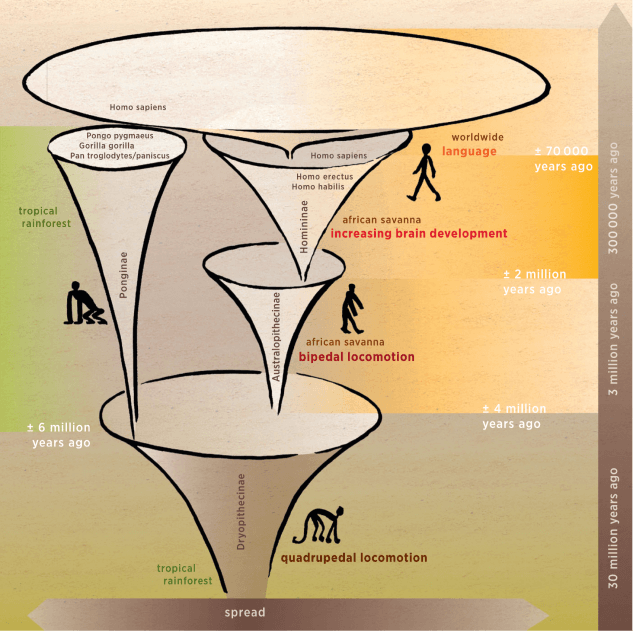
The Illusion of Separateness
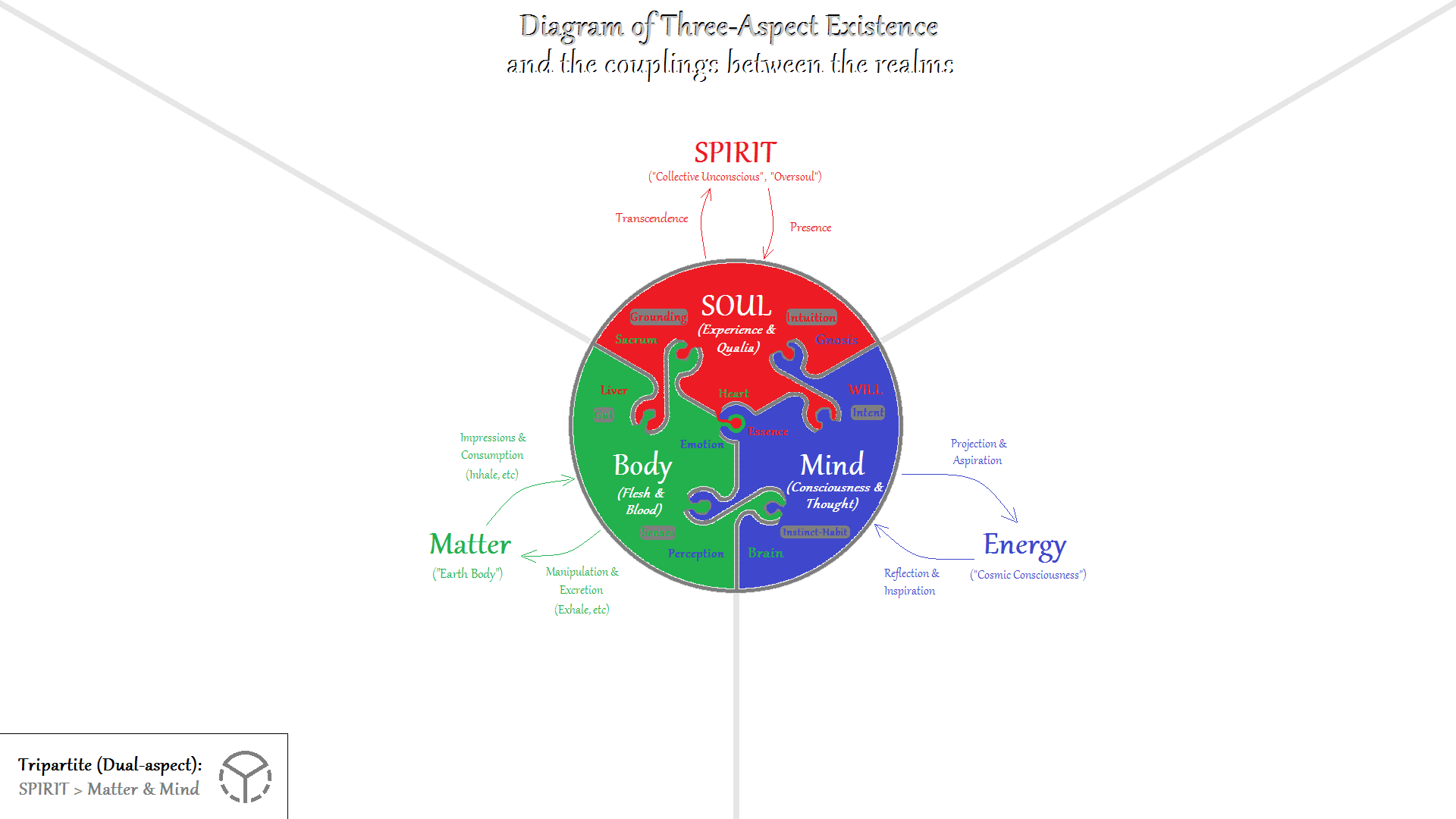
Our journey begins with the principles of analytical idealism, which posit that human minds are highly dissociated subsystems of a universal consciousness that permeates all of nature.
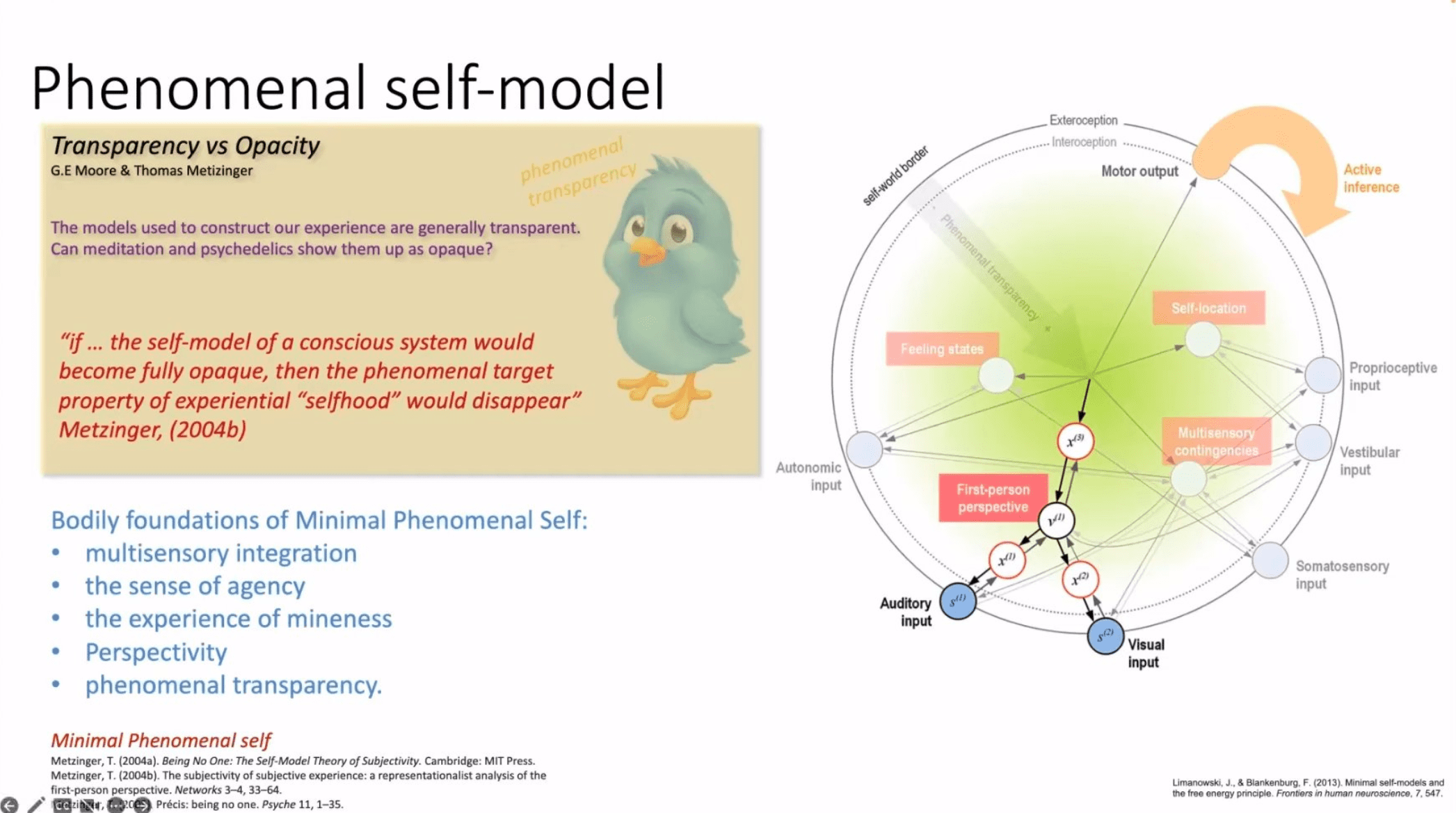
The perceived separation between the individual mind and the rest of reality gives rise to a pronounced sense of self and the illusion of an independent existence.
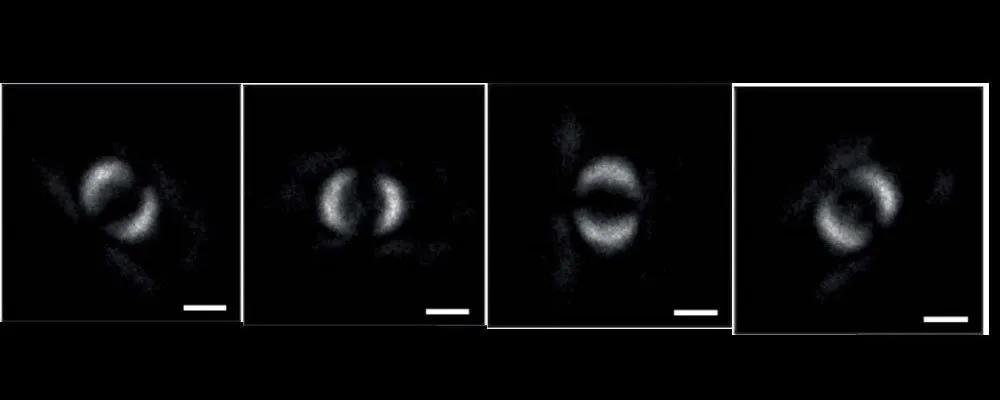
However, as Donald Hoffman's Interface Theory of Perception suggests, this apparent separateness is a computationally efficient illusion generated by our species-specific perceptual interface. Just as the icons on a computer desktop provide a user-friendly representation of the underlying code, our perceptual experiences offer a simplified, fitness-optimized rendering of reality.
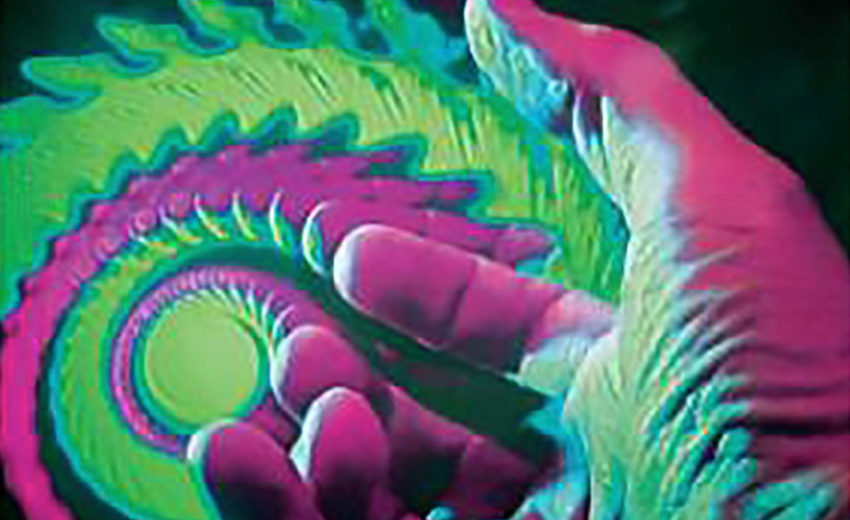
Beneath this veil of illusion, the individual mind and universal consciousness are inextricably entangled, reminiscent of the quantum entanglement of particles in physics.
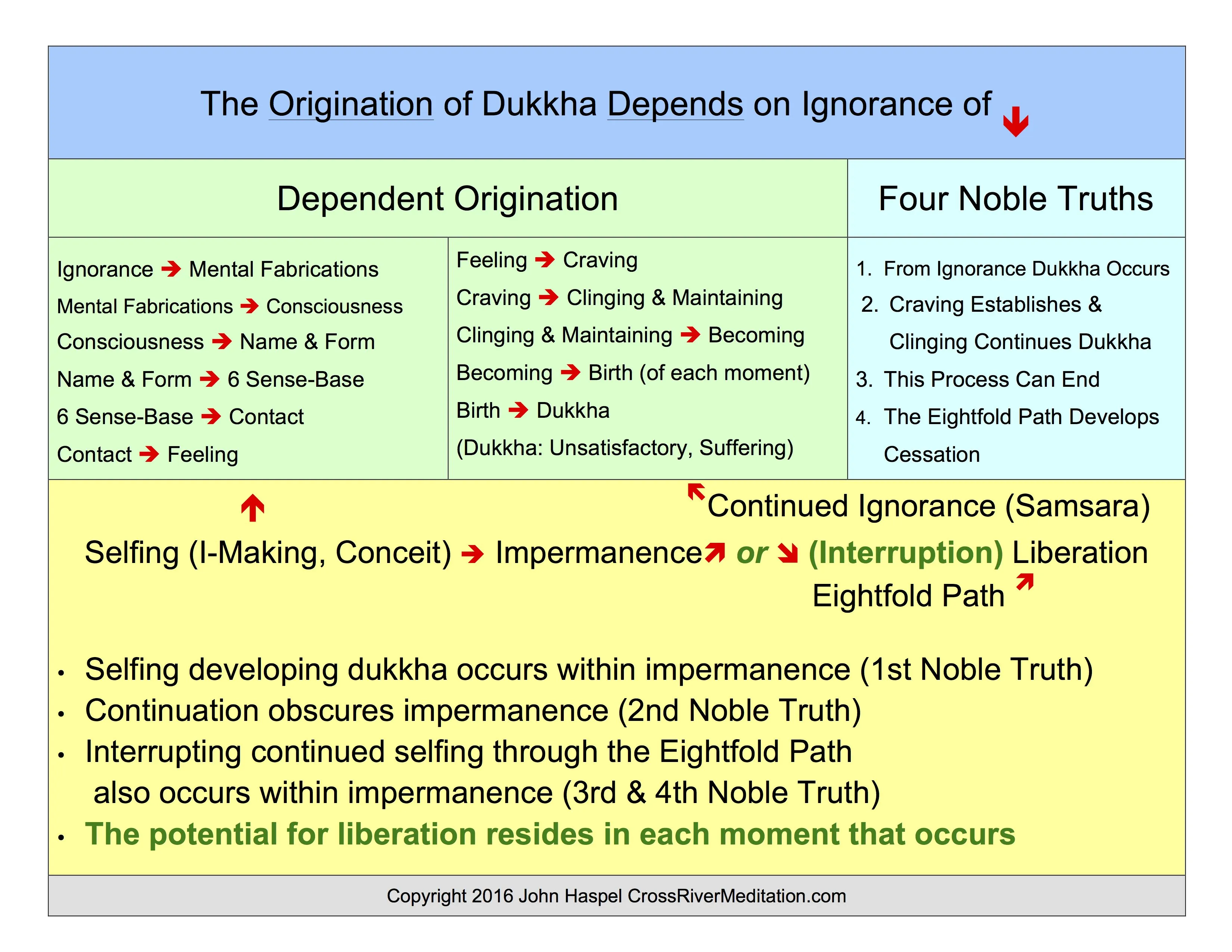
From this perspective, the individual self can be understood as a localized pattern of excitation within the universal field of consciousness, akin to a whirlpool in a vast ocean. The apparent boundaries between self and other, mind and matter, are not fundamental divisions but rather artifacts of our perceptual interface. This view resonates with the concept of "dependent origination" found in Buddhist philosophy, which holds that all phenomena arise in dependence upon one another, without inherent existence.

Synchronicity, then, can be understood as a glimpse beyond the veil of our perceptual interface, a momentary insight into the underlying unity and interdependence of all things. When we experience a meaningful coincidence that seems to defy the laws of causality, we are not merely witnessing a random glitch in the matrix but rather a revelation of the deep interconnectedness that pervades reality.
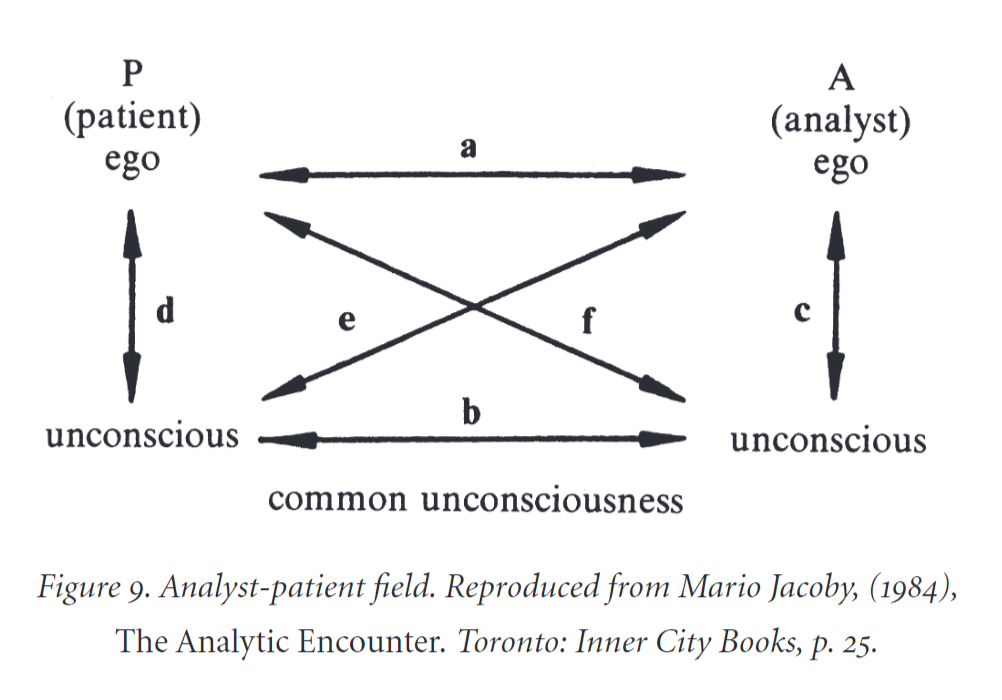
This perspective also sheds light on the relationship between synchronicity and the of consciousness, which refers to the difficulty of explaining how subjective experience arises from objective physical processes.
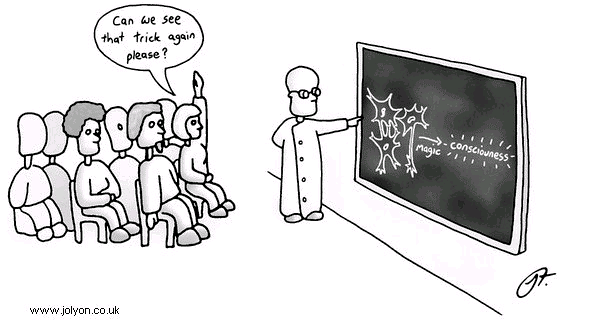
If consciousness is fundamental and universal, as analytical idealism suggests, then the hard problem dissolves, as matter and mind are seen as two aspects of the same underlying reality. Synchronicity, in this light, can be understood as a natural consequence of the non-dual nature of existence, rather than an anomaly in need of explanation.
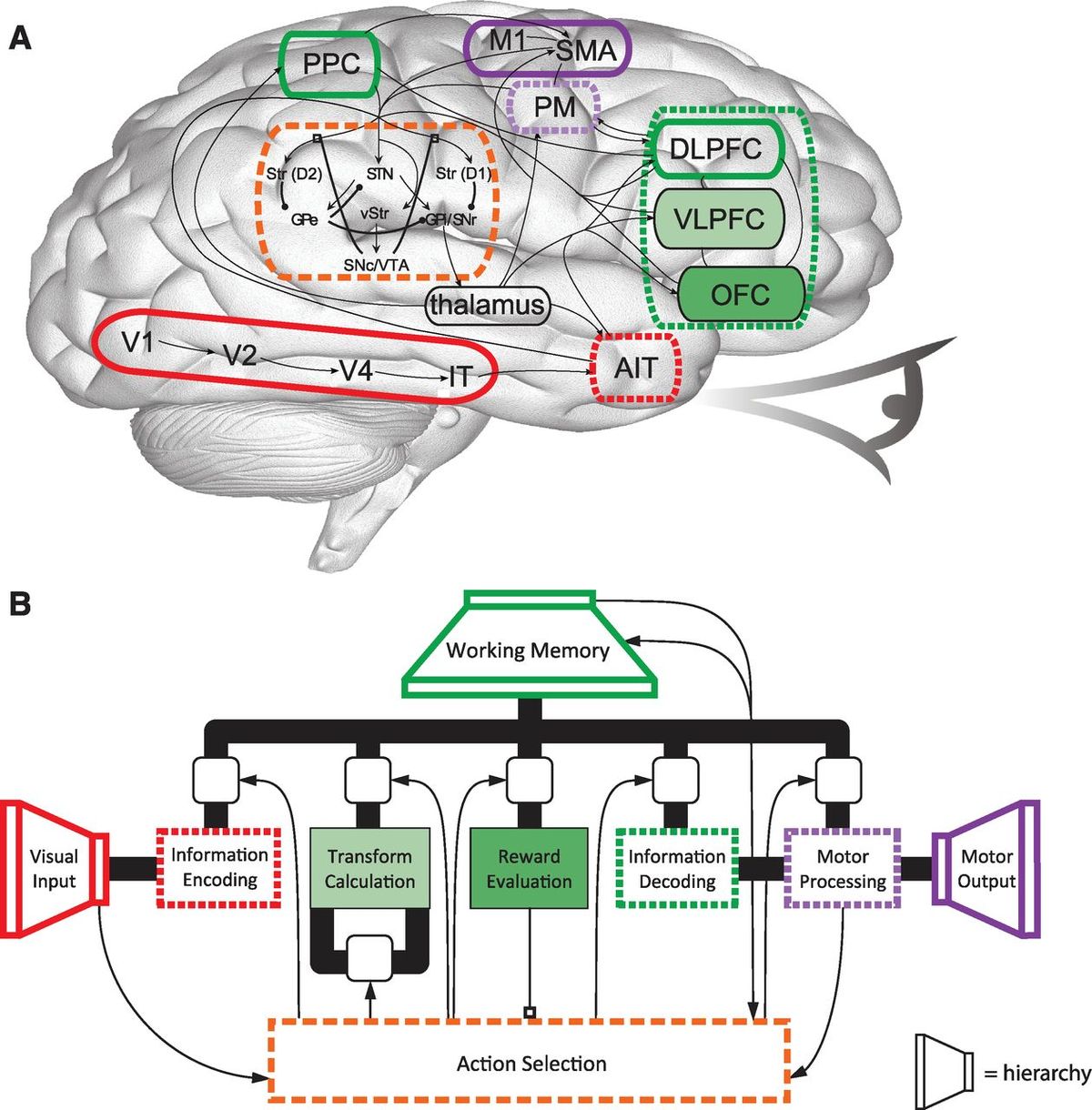
"The appearance of separation is a function of our cognitive architecture rather than a reflection of the fundamental nature of reality." - Donald Hoffman
Maybe, synchronicity is the organizing ability of pure consciousness. In other words, if you go deeply enough into your own awareness to come near to its source, everything is perfectly ordered and put together with everything else. Synchronicity is merely a glimpse of this.
The Algebra of Consciousness
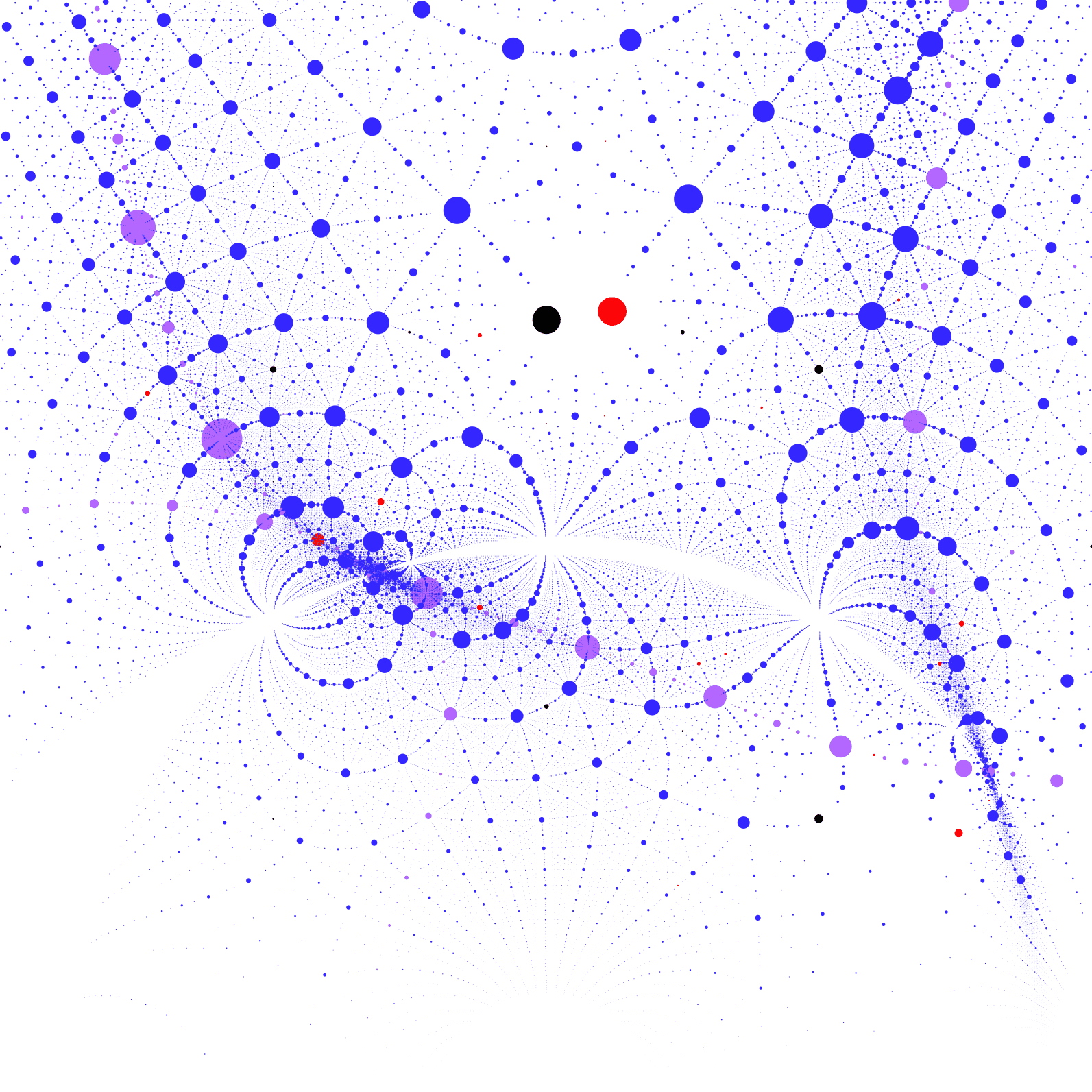
To further elucidate the relationship between the individual mind and universal consciousness, we turn to the elegant language of algebraic number theory.
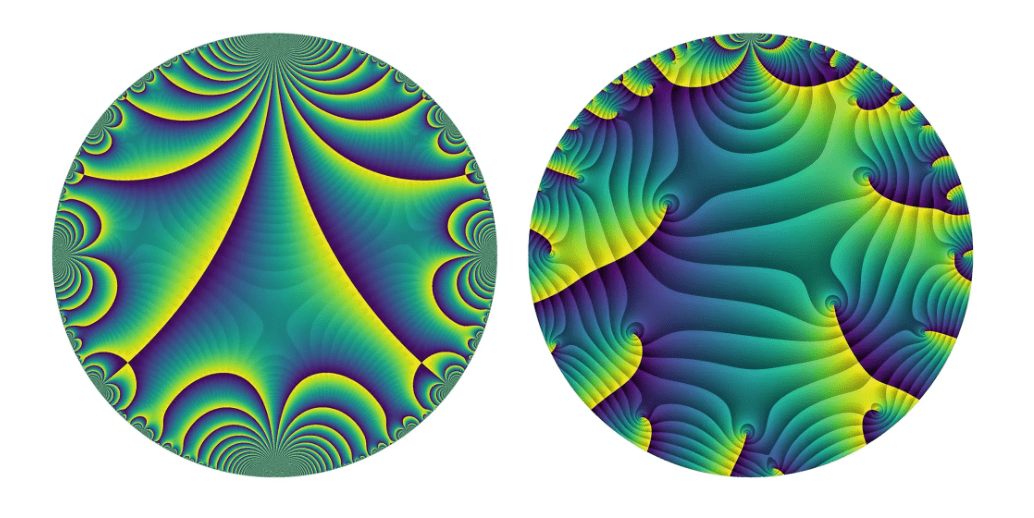
Imagine the self-awareness of the individual mind (p) as a numerator and the universal consciousness (q) as a denominator in a cosmic fraction (p/q). The properties of the resulting algebraic structure reflect the intricate interconnectedness between the two, much like the way the Galois group of a polynomial captures the symmetries and relationships among its roots.
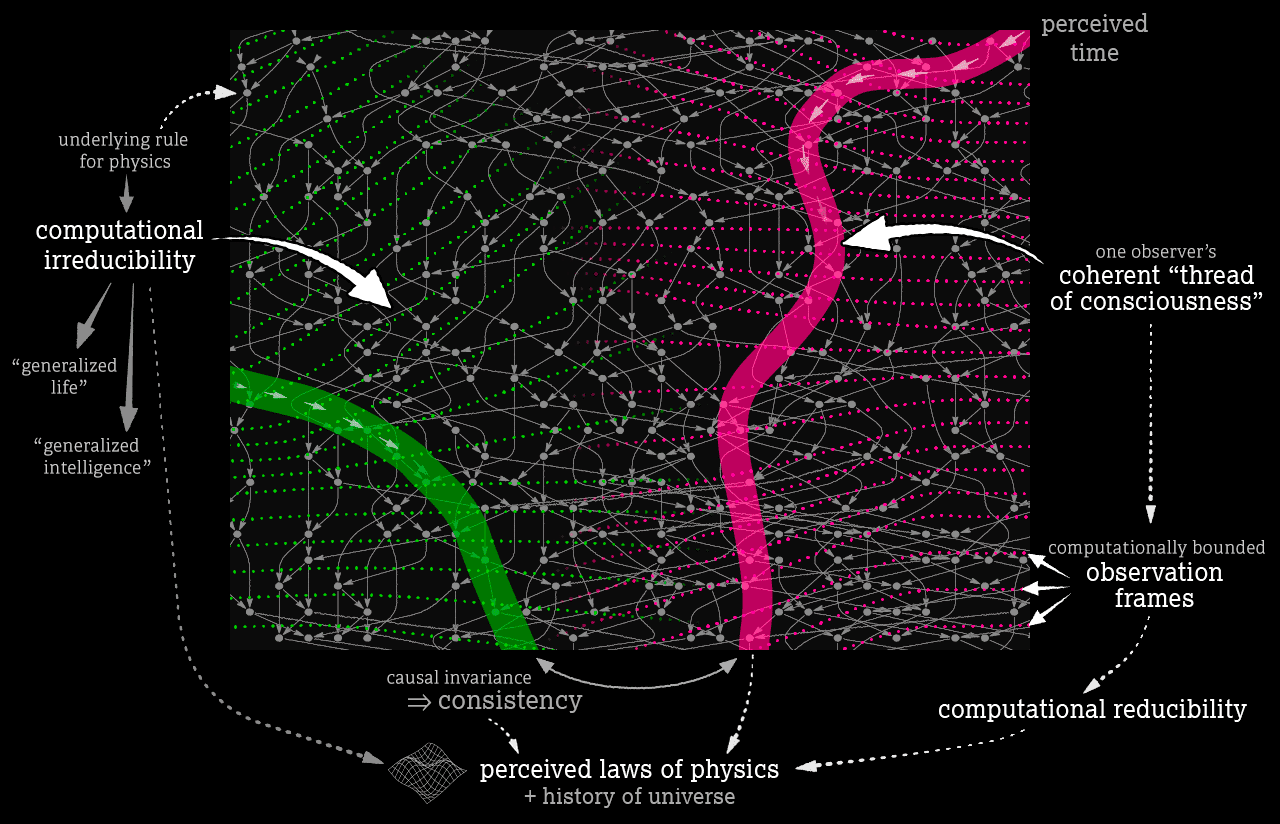
This mathematical perspective dovetails with the concept of computational equivalence from complex systems theory, which suggests that an individual human mind and the universe as a whole, despite their vastly different scales, are ultimately equivalent in their computational sophistication. The mind and the cosmos are akin to two expressions of the same underlying algorithmic reality.
The Collapse of Complexity
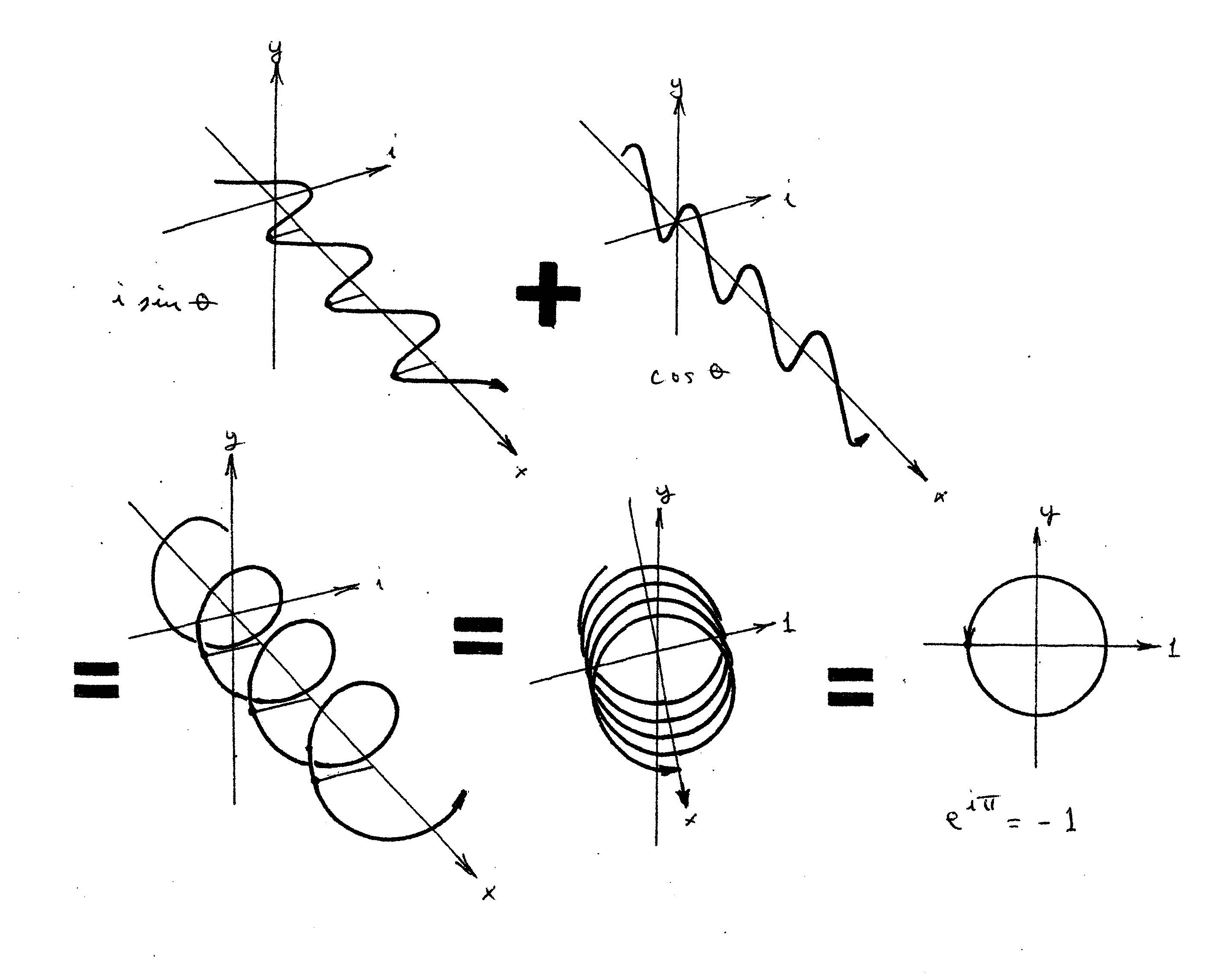
As the mind transcends the illusion of separateness and enters a state of non-duality, the perceived complexity and distinctions of the world collapse into a unified whole.
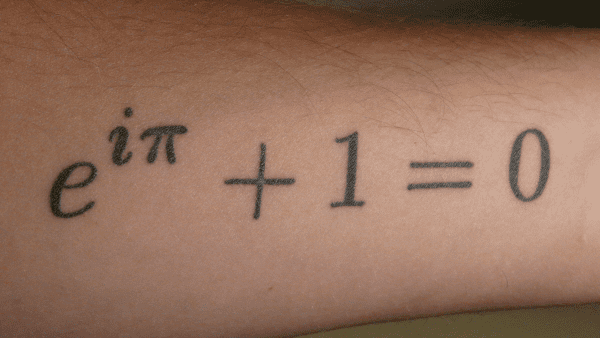
This experience of profound interconnectedness is reminiscent of the emergence of Euler's identity (e^iπ + 1 = 0) from seemingly disparate mathematical concepts. In these moments of synchronicity, the veil of illusion is lifted, and we catch a glimpse of the fundamental computational equivalence and non-dual nature of reality.
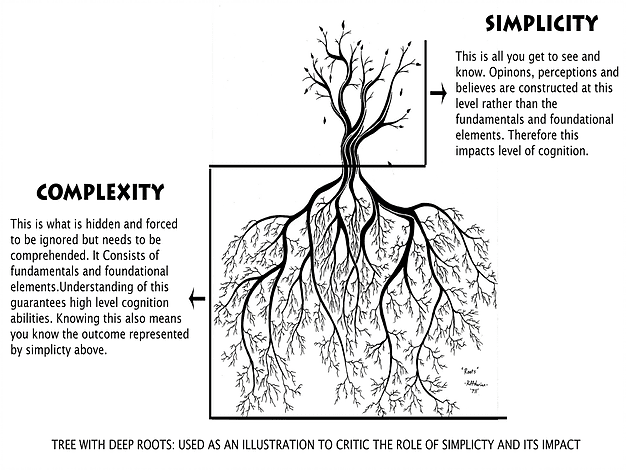
The boundaries between the local, self-referential processing of the individual mind and the non-local, holistic dynamics of universal consciousness dissolve, giving way to a seamless experience of unity.
The Holographic Matrix Category theory
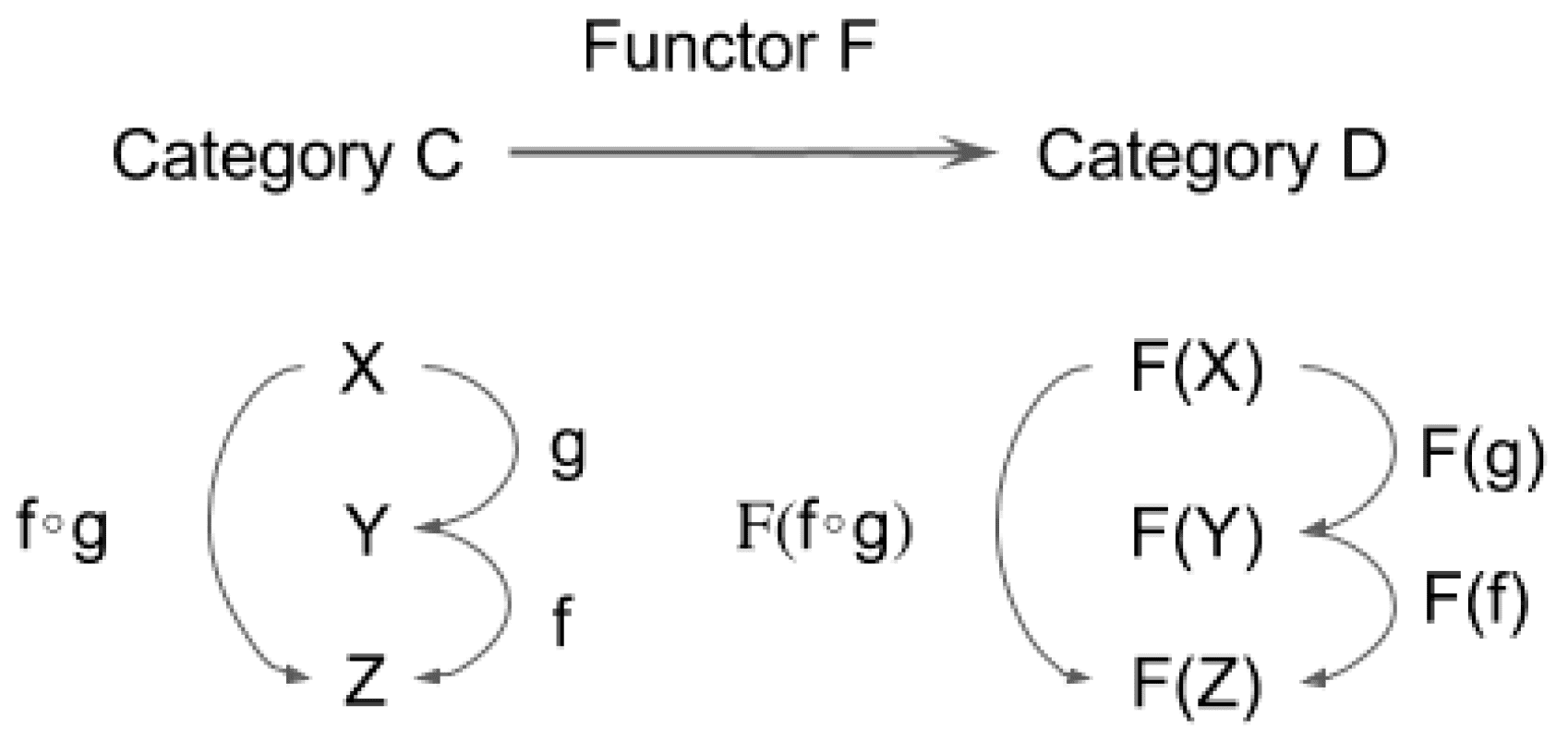
A branch of mathematics that deals with the abstract relationships between objects and morphisms, offers a powerful framework for understanding the nature of synchronicity.
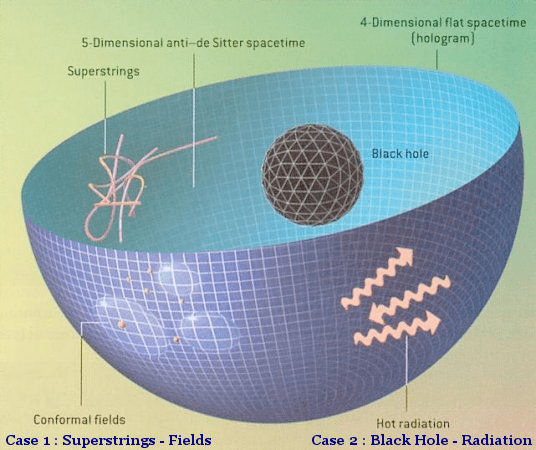
We can conceptualize the relationship between the individual mind and universal consciousness as a natural transformation between two functors: one mapping from physical systems to computational processes, and the other from computational processes to experiential states.
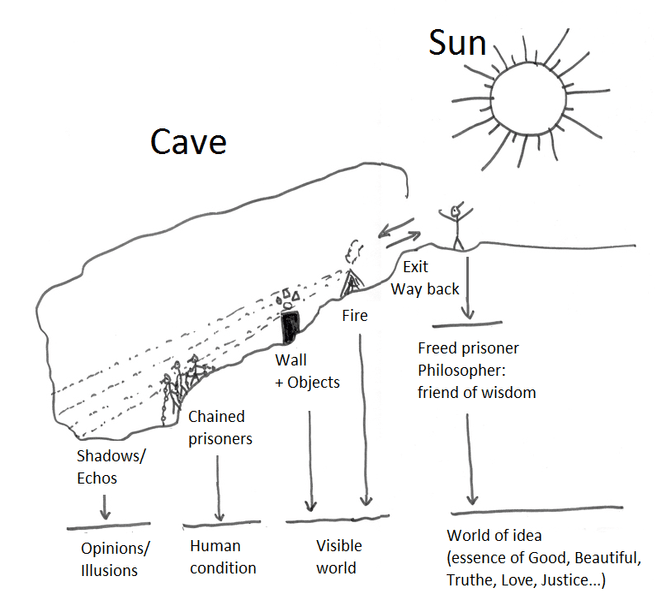 Synchronicity, then, can be seen as a higher-order natural transformation that collapses these functors into a single endofunctor, revealing the underlying unity of the physical, computational, and experiential realms. This categorical perspective resonates with the holographic principle from quantum gravity, which suggests that the three-dimensional world we perceive is a holographic projection from a two-dimensional surface.
Synchronicity, then, can be seen as a higher-order natural transformation that collapses these functors into a single endofunctor, revealing the underlying unity of the physical, computational, and experiential realms. This categorical perspective resonates with the holographic principle from quantum gravity, which suggests that the three-dimensional world we perceive is a holographic projection from a two-dimensional surface.

The individual mind, in this light, is a localized holographic projection of the universal consciousness, and synchronicity arises when the holographic boundary dissolves, exposing the infinite depths of the holographic matrix.
Neural Correlates of Synchronicity
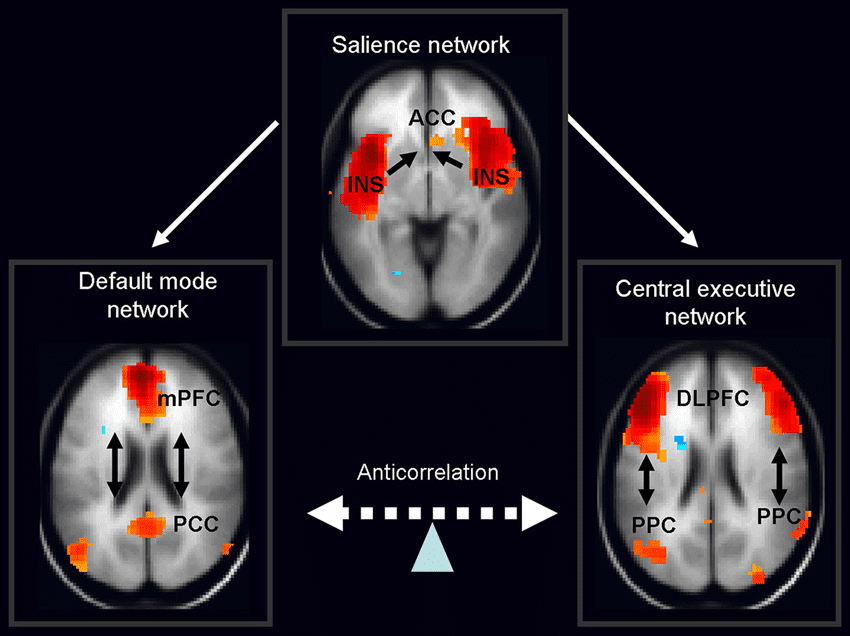
Recent advances in neuroscience suggest that synchronicity may be associated with a transient shift in neural dynamics, particularly in the interplay between the default mode network (DMN) and the salience network (SN). 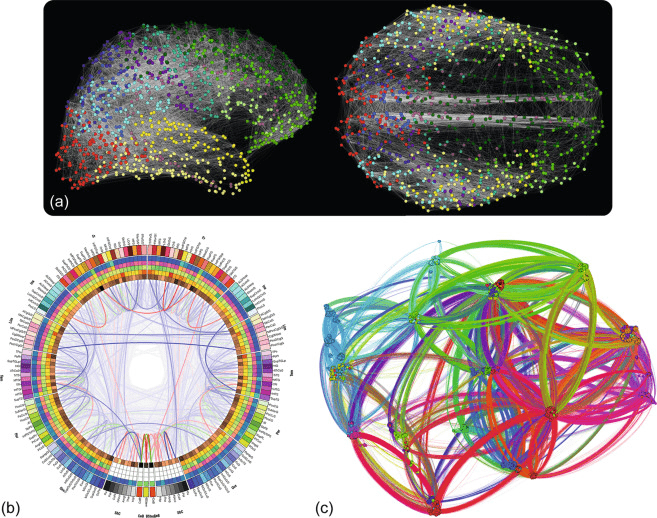
The DMN, involved in self-referential processing and autobiographical memory, may exhibit reduced activity during synchronistic experiences, while the SN, involved in detecting salient stimuli and orienting attention, may show increased connectivity with the DMN.
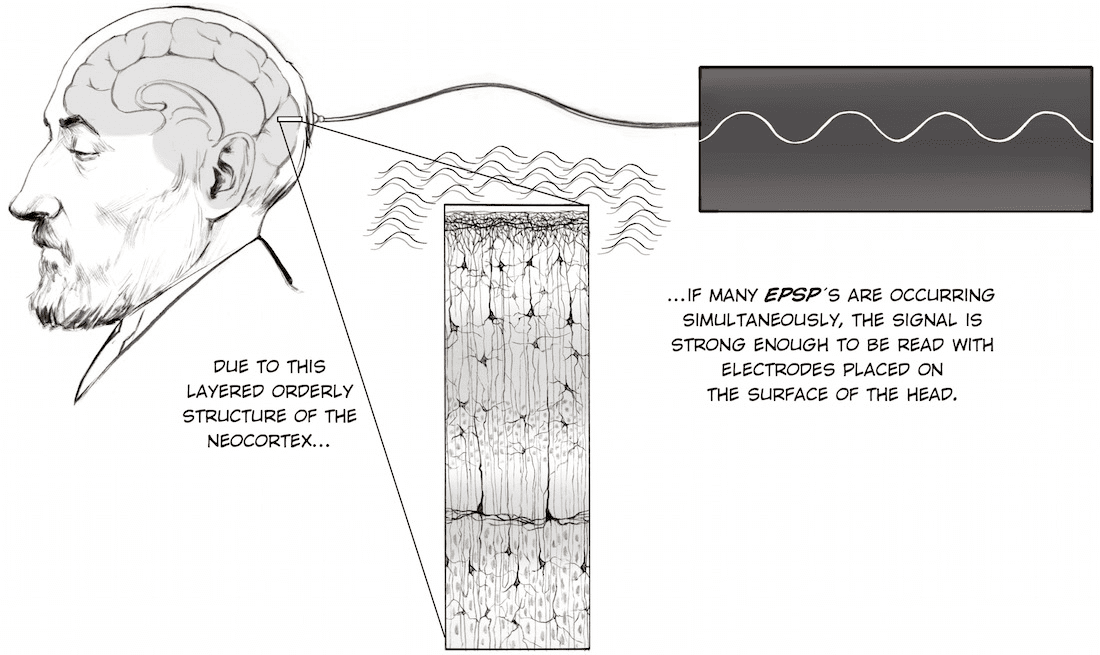
This altered neural configuration could reflect a temporary dissolution of the self-other boundary and a heightened sensitivity to the holographic interconnectedness of reality. The brain, in these moments, becomes a microcosm of the universal dance of consciousness, mirroring the non-local, non-hierarchical dynamics of the cosmos.
The Rhizomatic Fabric of Reality
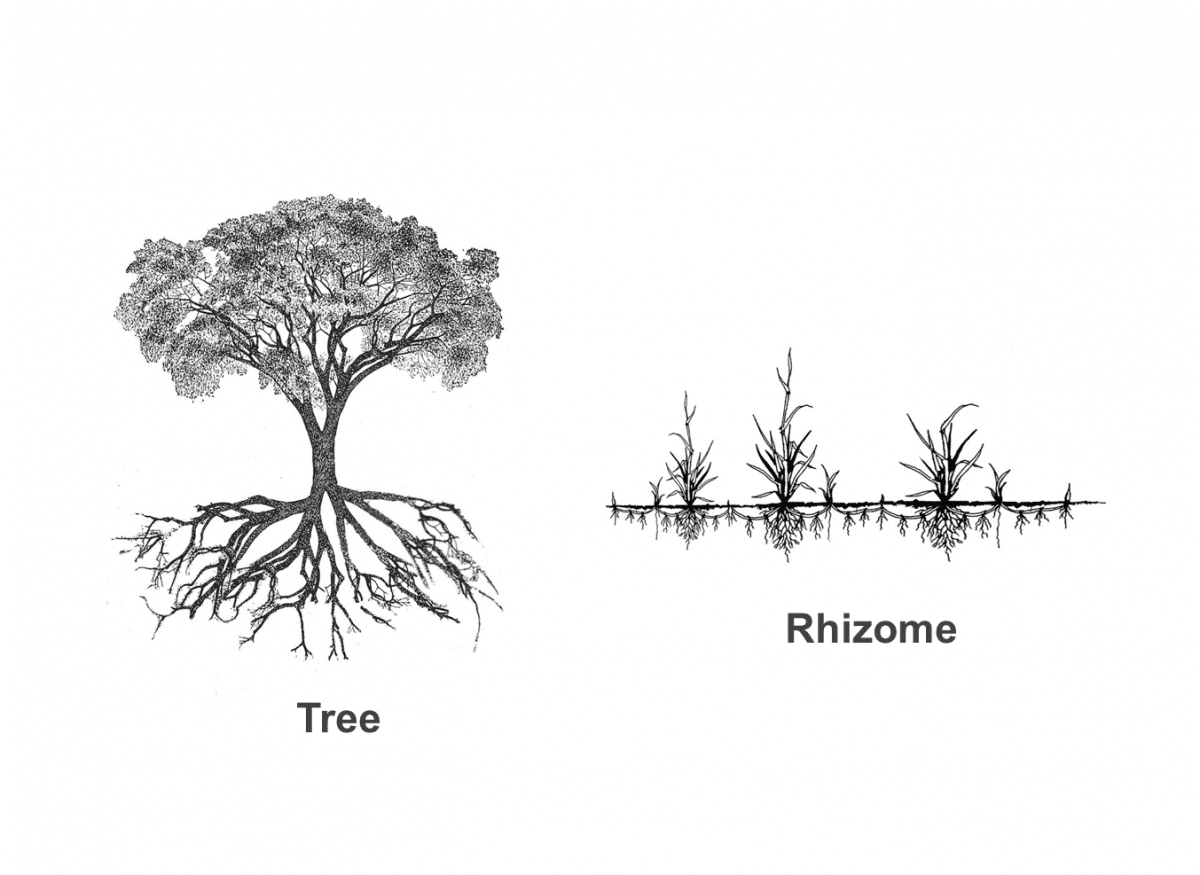
To further illuminate the nature of synchronicity, we turn to the philosophical concept of the "rhizome," introduced by Gilles Deleuze and Félix Guattari. In contrast to the hierarchical, tree-like model of reality that dominates Western thought, the rhizome suggests a non-hierarchical, heterogeneous network of connections and singularities.
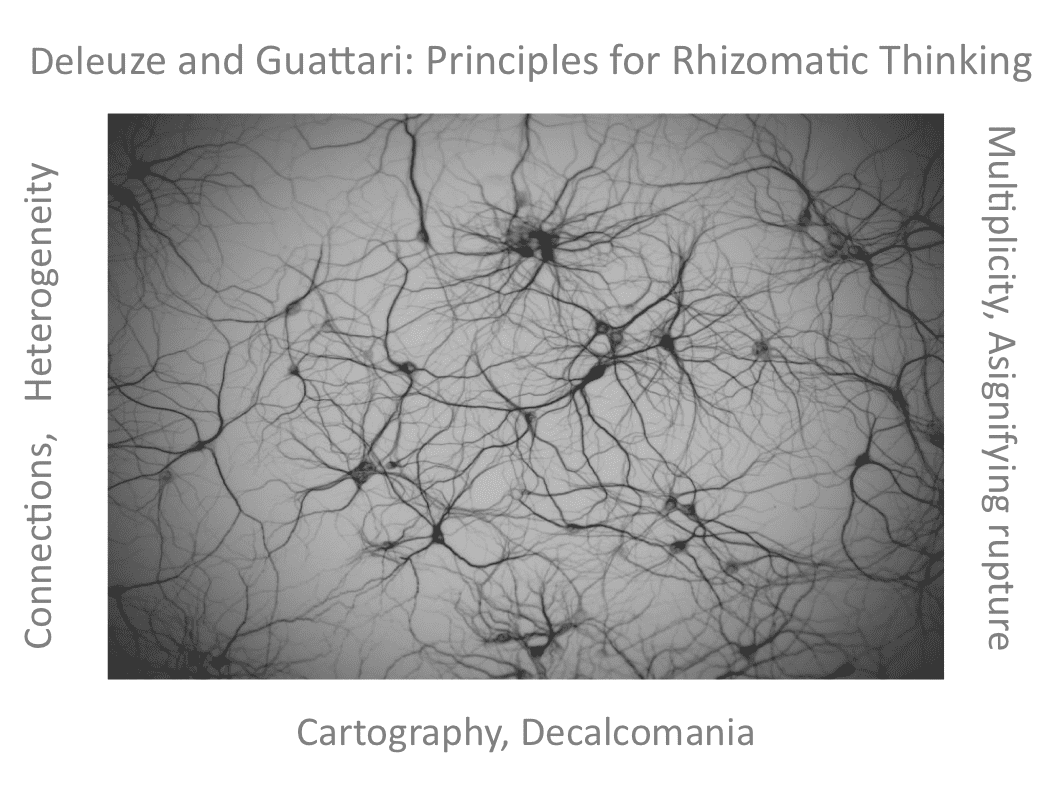
Synchronicity, in this context, can be seen as a "line of flight" that cuts across the rhizomatic fabric of reality, connecting seemingly disparate elements in a non-linear, acausal fashion.
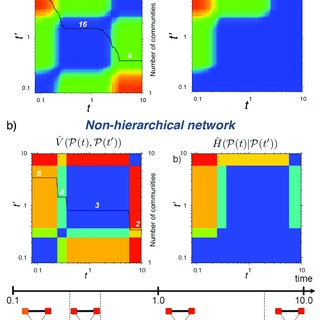
These meaningful coincidences are not mere glitches in the matrix but rather glimpses into the underlying interconnectedness of all things. The rhizomatic perspective invites us to embrace the inherent creativity and novelty of synchronicity, recognizing it as a fundamental expression of the generative nature of reality.
Quantum Cognition & the Implicate Order
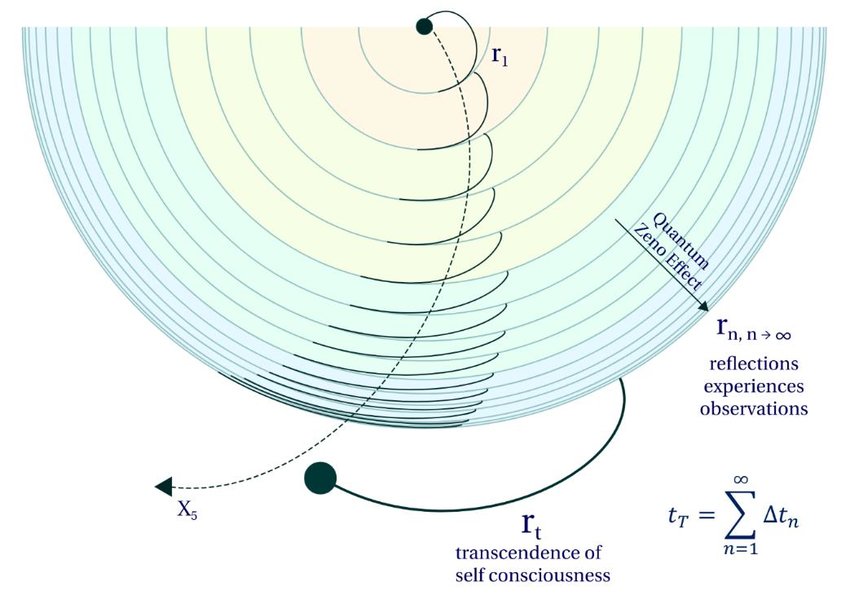
In physics, the principle of correspondence was cited by Niels Bohr to illustrate the discontinuum between the particle and the wave. Bohr later changed the term to "argument of correspondence." The idea of correspondence is related to the concept of the natural philosophers of the Middle Ages, who talked of the "sympathy of all things," and to the Greek philosophers such as Plato who postulated an underlying ideal form.
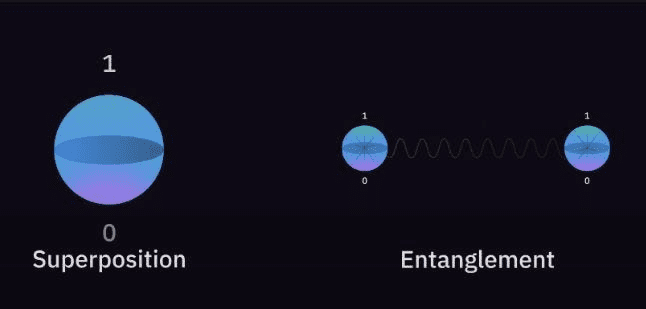
The emerging field of quantum cognition suggests that the principles of quantum mechanics, such as superposition, entanglement, and non-locality, may not be limited to the subatomic realm but may also apply to the workings of the human mind.
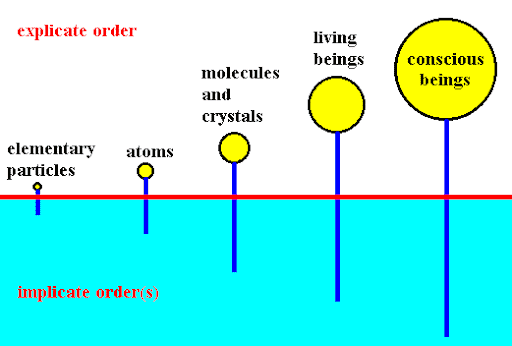
This perspective, championed by physicists like David Bohm and Roger Penrose, proposes that consciousness arises from quantum processes within the brain, and that the apparent randomness of quantum events may be the source of free will.
David Bohm expressed the theory of the implicate order, which is the order that underlies what is external, or the explicate order. The implicate order is part of and contains the explicate order. Bohm saw the universe as a hologram, where each part is enfolded into each other part. The synchronicity in this theory is that locality disappears. Time, space, and causality are not evident in events that happen. What may seem to be creativity may instead be the expression of synchronicity.
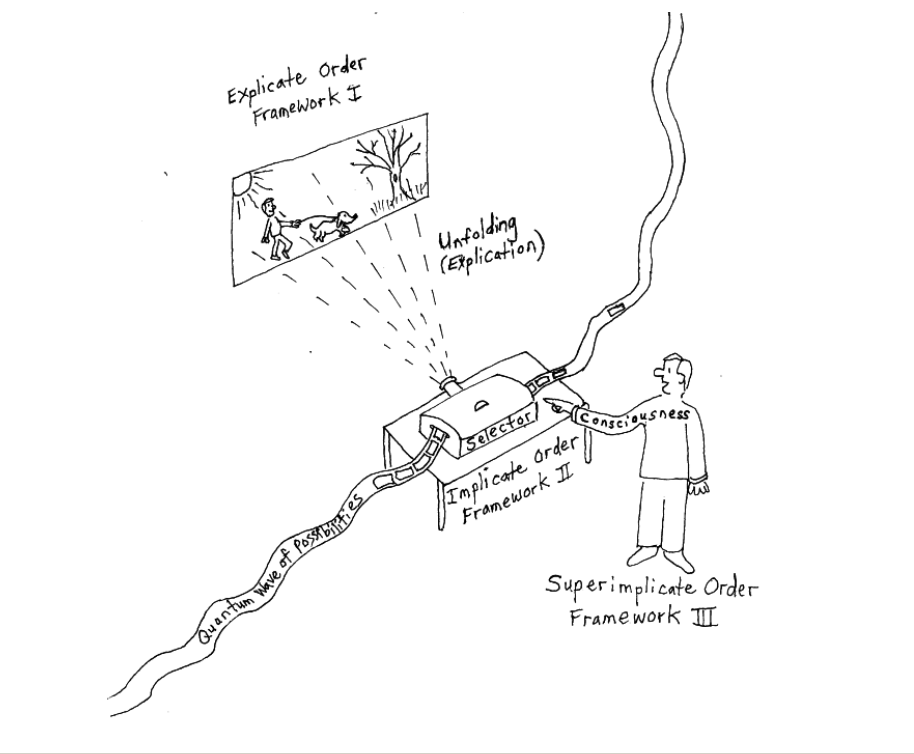
Bohm also proposed a superimplicate order, which may contain a unifying principle. Intuition may be an expression of the superimplicate order functioning to perceive the implicate order and therefore the explicate order. The notion of the ‘sixth sense’ is similar to the notion of synchronicity.
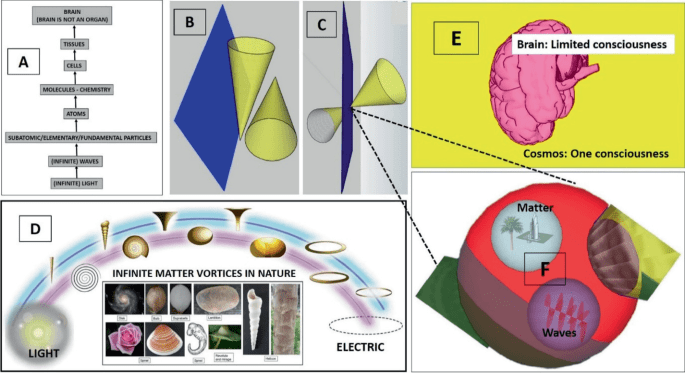
Synchronicity, in this light, may be a manifestation of the implicate order, revealing the underlying unity and interconnectedness of all things.
Panpsychism and the Cosmic Mind
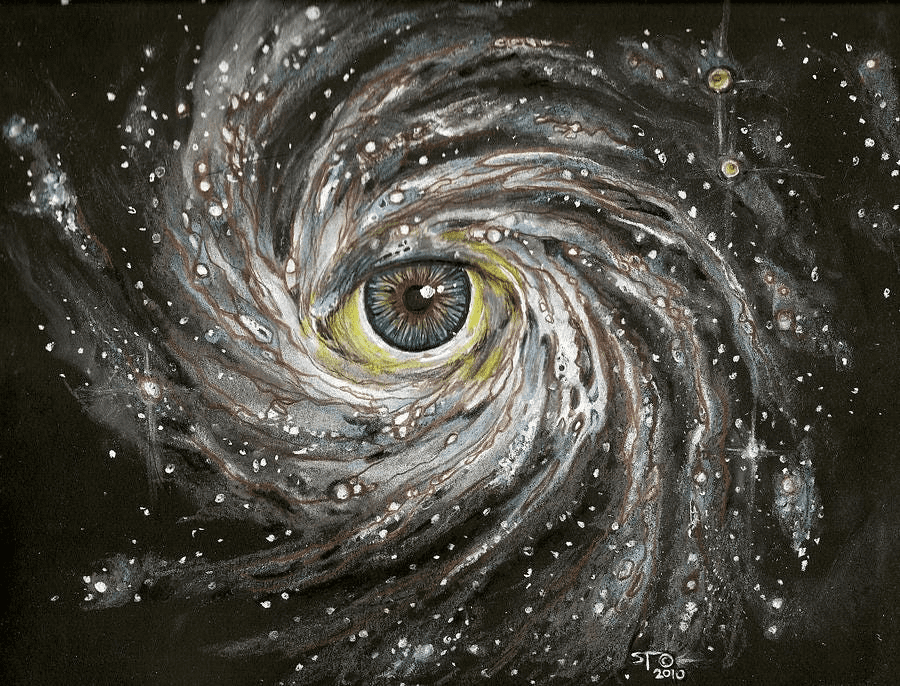
Panpsychism, the idea that consciousness is a fundamental property of all matter, has gained traction in recent years as a possible solution to the hard problem of consciousness.
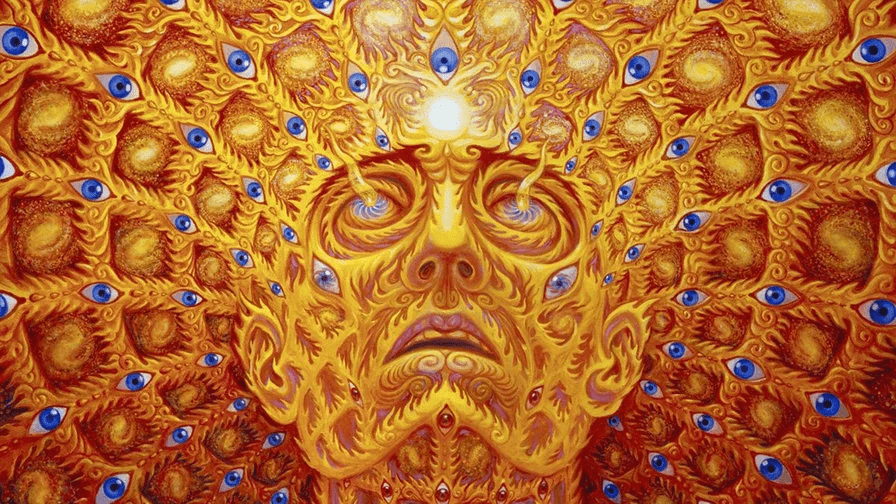
This perspective suggests that the universe itself may be a vast, cosmic mind, and that human consciousness is but a localized expression of this universal consciousness.
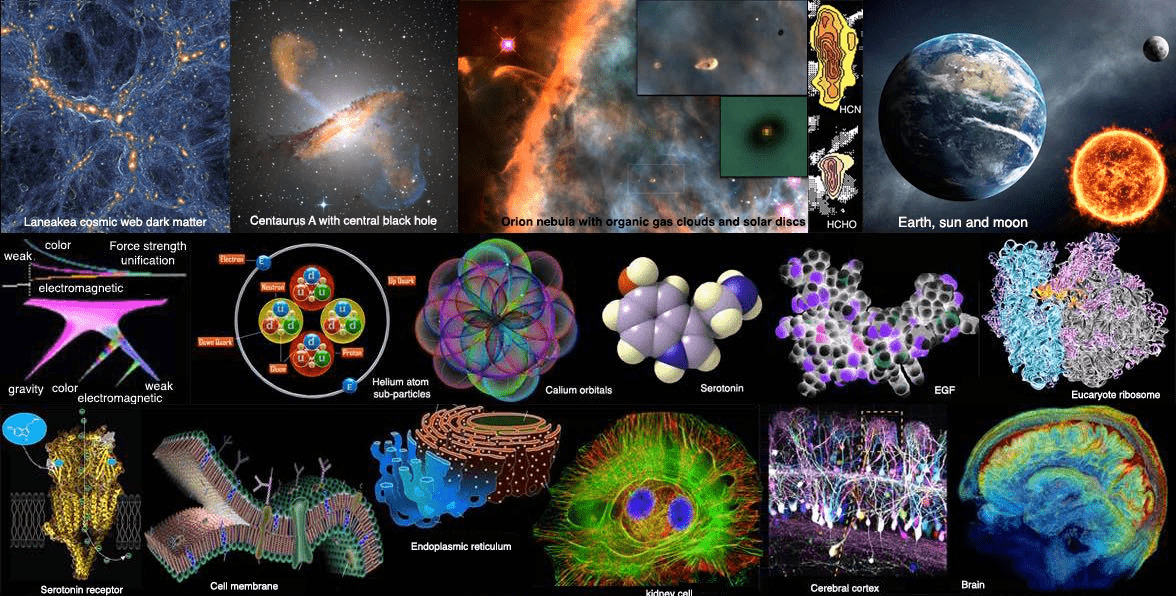
In this context, synchronicity may be understood as a resonance between the individual mind and the cosmic mind, a momentary alignment of the microcosm and the macrocosm. The panpsychist lens invites us to consider the possibility that synchronicity is not merely a psychological phenomenon but a fundamental feature of a universe suffused with consciousness.
Topological Quantum Field Theory and the Akashic Field
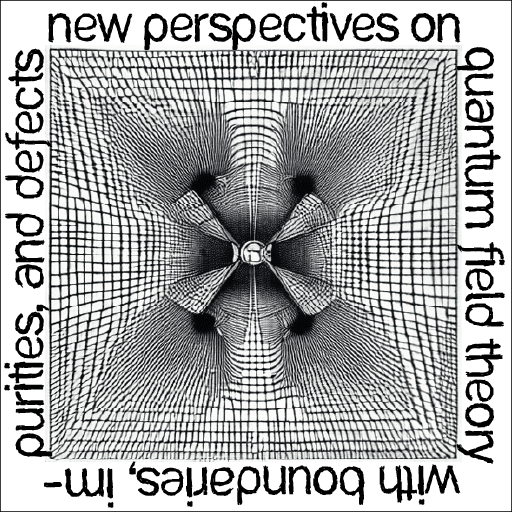
Topological quantum field theory (TQFT), a branch of theoretical physics that combines quantum mechanics with the mathematics of topology, describes the behavior of quantum fields in a way that is independent of the specific geometry of spacetime, focusing instead on global, topological properties.
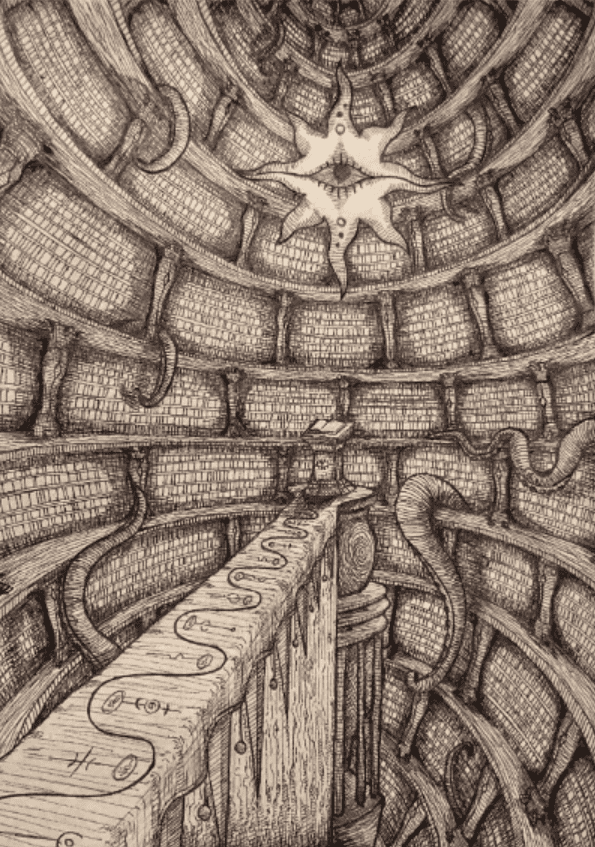
Some physicists, such as Ervin Laszlo, have proposed that the quantum vacuum, the underlying sea of quantum fluctuations that permeates all of space, may contain a vast, interconnected network of information called the Akashic field.
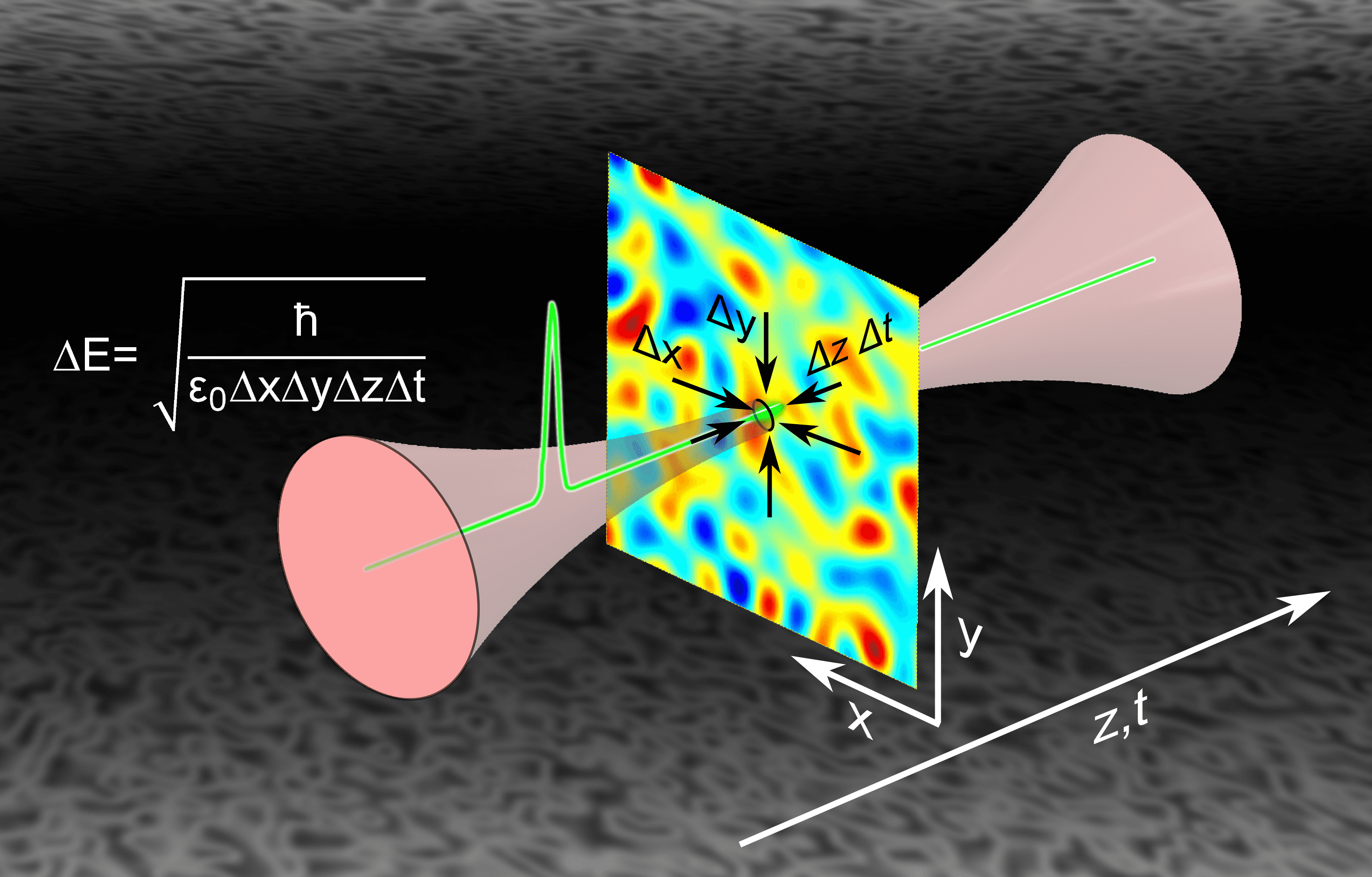
Synchronicity, in this context, may be a manifestation of the Akashic field, a momentary access to the infinite library of cosmic information that underlies reality.
Fractal Consciousness and the Holographic Multiverse
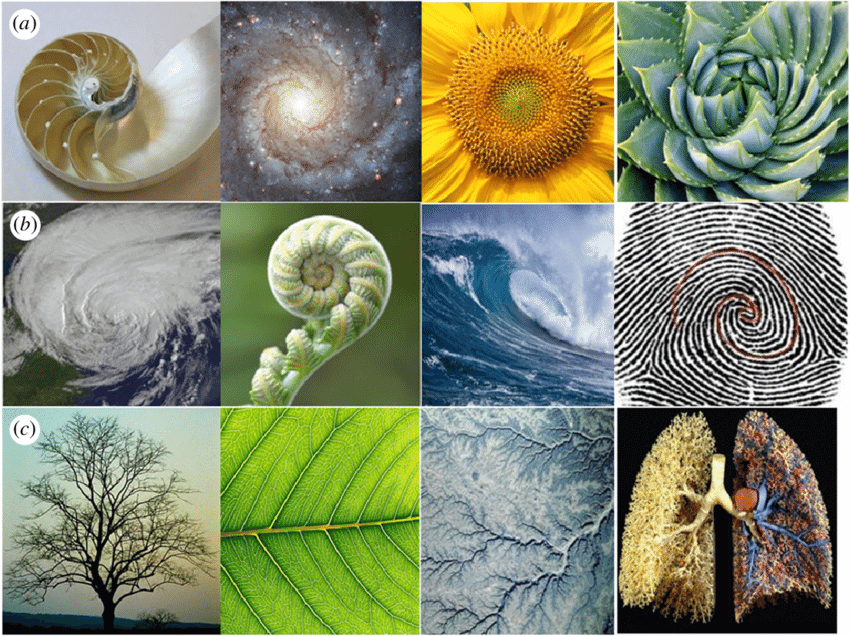
The holographic principle has been extended by some theorists to encompass the idea of a holographic multiverse, where our universe is but one of countless holographic projections, each encoding information about the others.
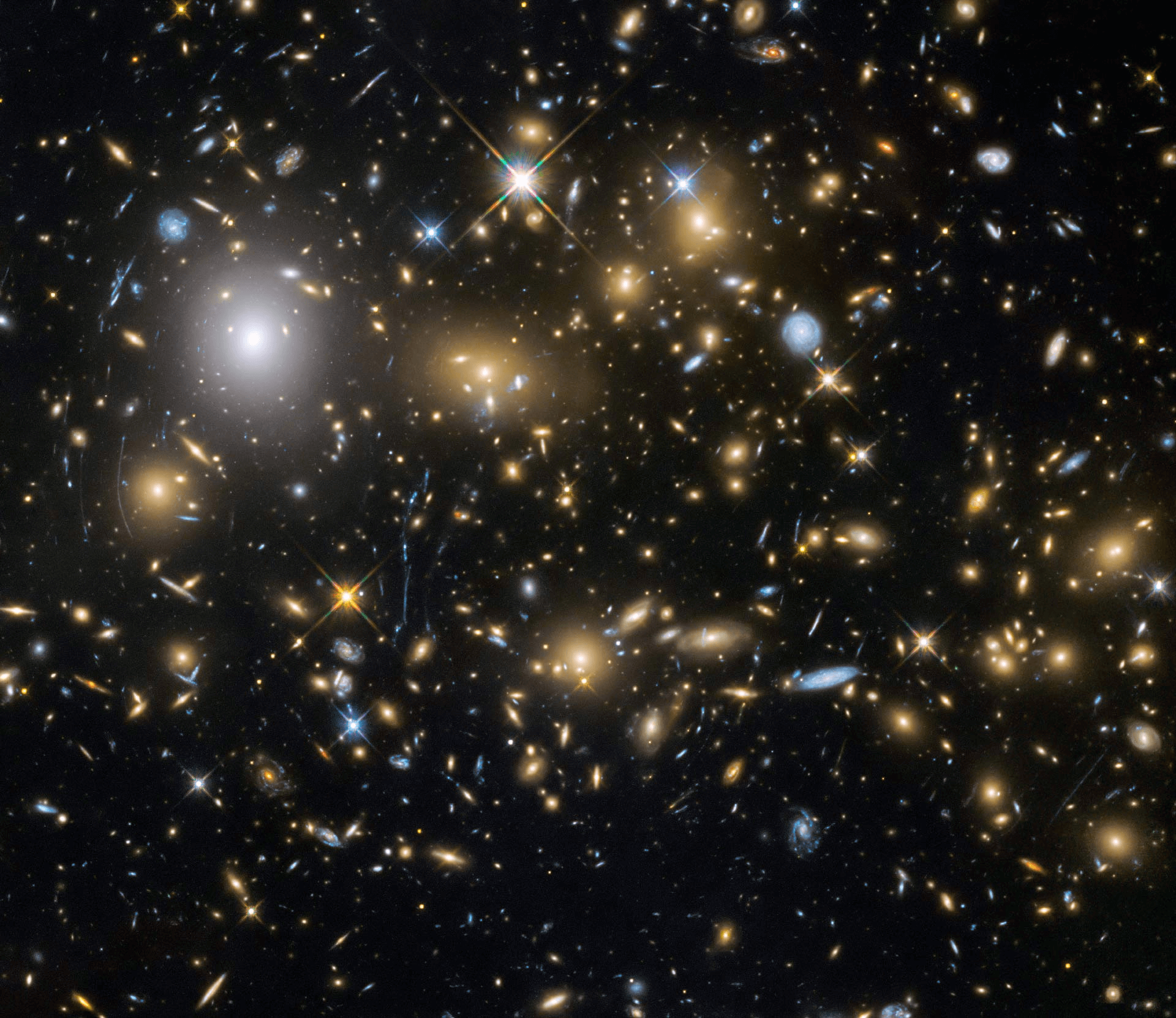
The concept of fractal consciousness, inspired by the self-similar patterns found in fractal geometry, suggests that consciousness may exhibit a similar recursive structure, with each level of consciousness containing within itself the entirety of the cosmos.
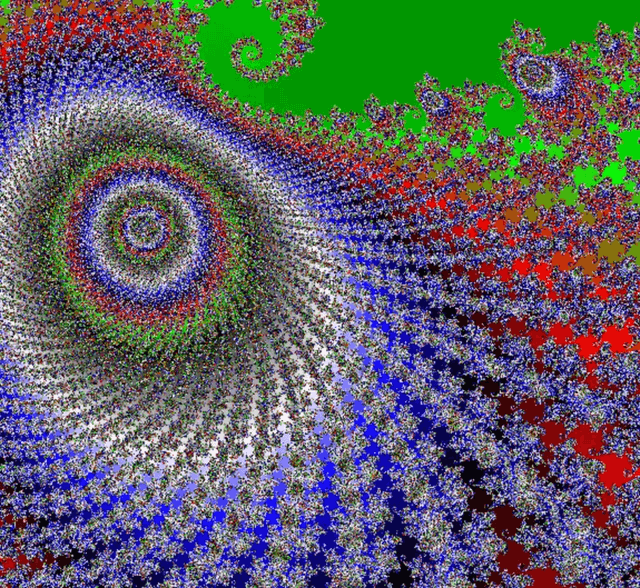
Synchronicity, in this context, may be a resonance across multiple levels of the fractal hologram, a momentary alignment of the individual mind with the infinite expanse of the multiverse.
The Anthropic Principle and the Participatory Universe
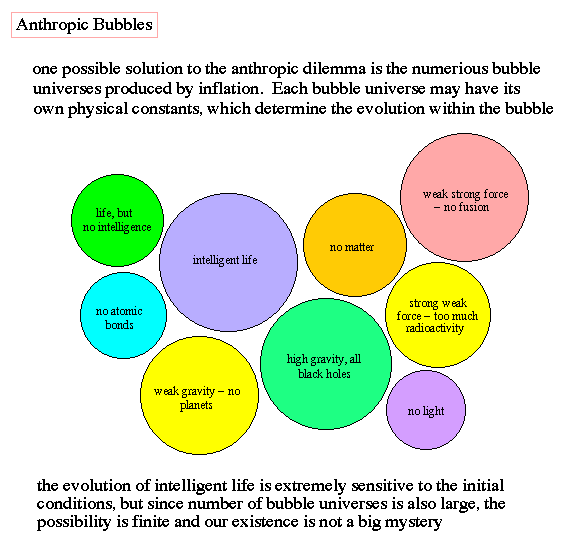
The anthropic principle, which states that the universe must be compatible with the existence of conscious observers, has been extended into the participatory anthropic principle, suggesting that conscious observers may play an active role in shaping the universe through the act of measurement.
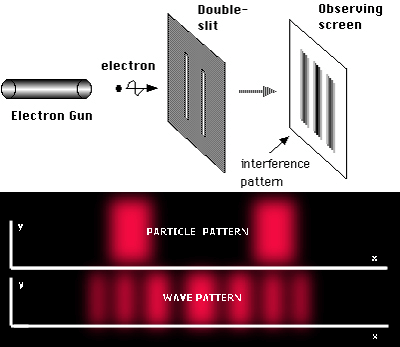
In this view, synchronicity may be a manifestation of the participatory nature of reality, a co-creation between the individual mind and the cosmos.
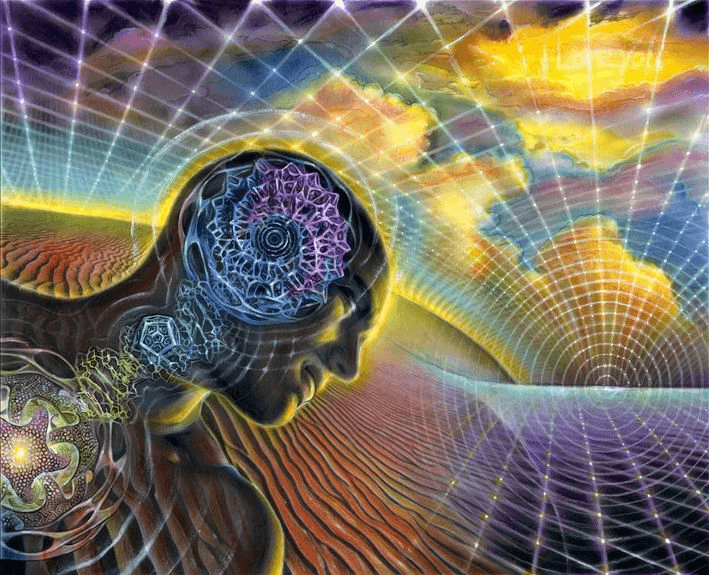
The anthropic lens invites us to consider that synchronicity is not merely a passive experience but an active participation in the unfolding of the universe.
The Omega Point and the Transcendent Attractor
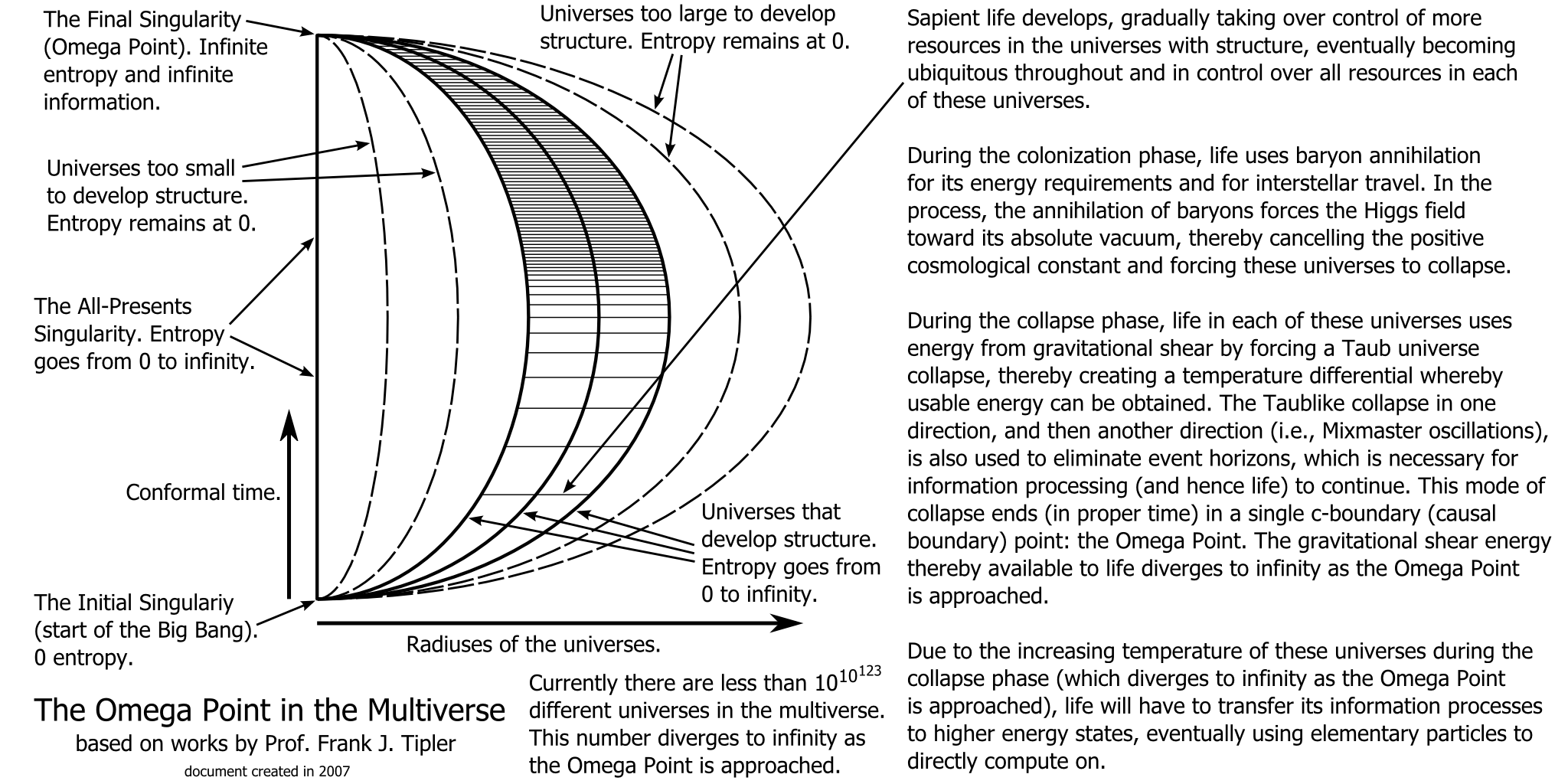
The concept of the Omega Point, proposed by Pierre Teilhard de Chardin, represents a hypothetical future state of maximum complexity and consciousness towards which the universe is evolving.
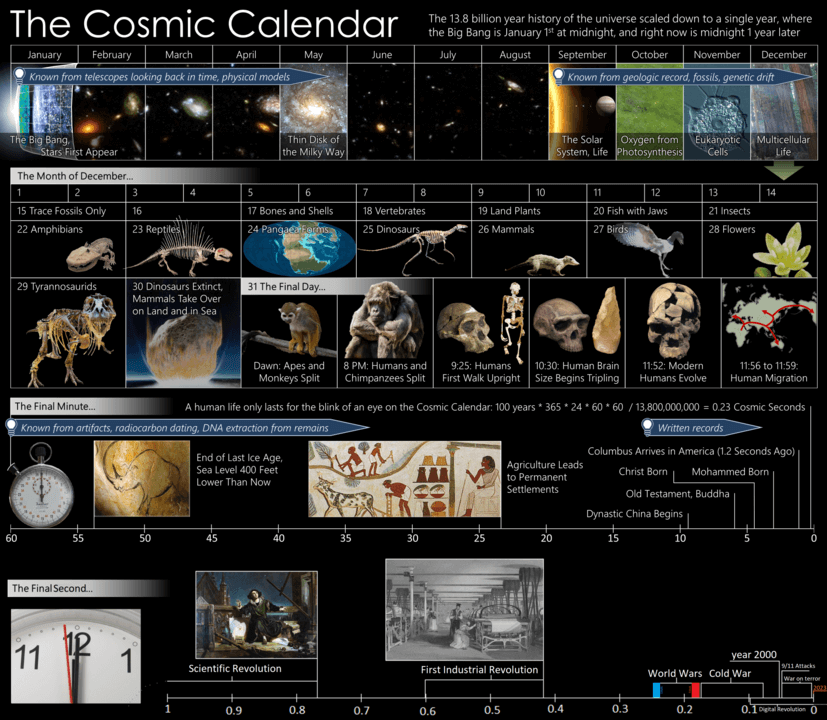
The universe can be seen as a dynamic, self-organizing system with an inherent teleology, or purpose, with the Omega Point as a kind of transcendent attractor, drawing all of reality towards an ultimate state of unity and wholeness.
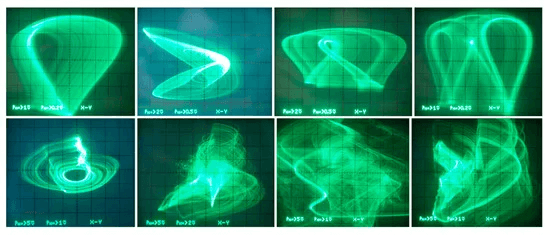
Synchronicity, in this context, may be a signpost along the path of cosmic evolution, a glimpse of the ultimate destiny that awaits us at the end of time.
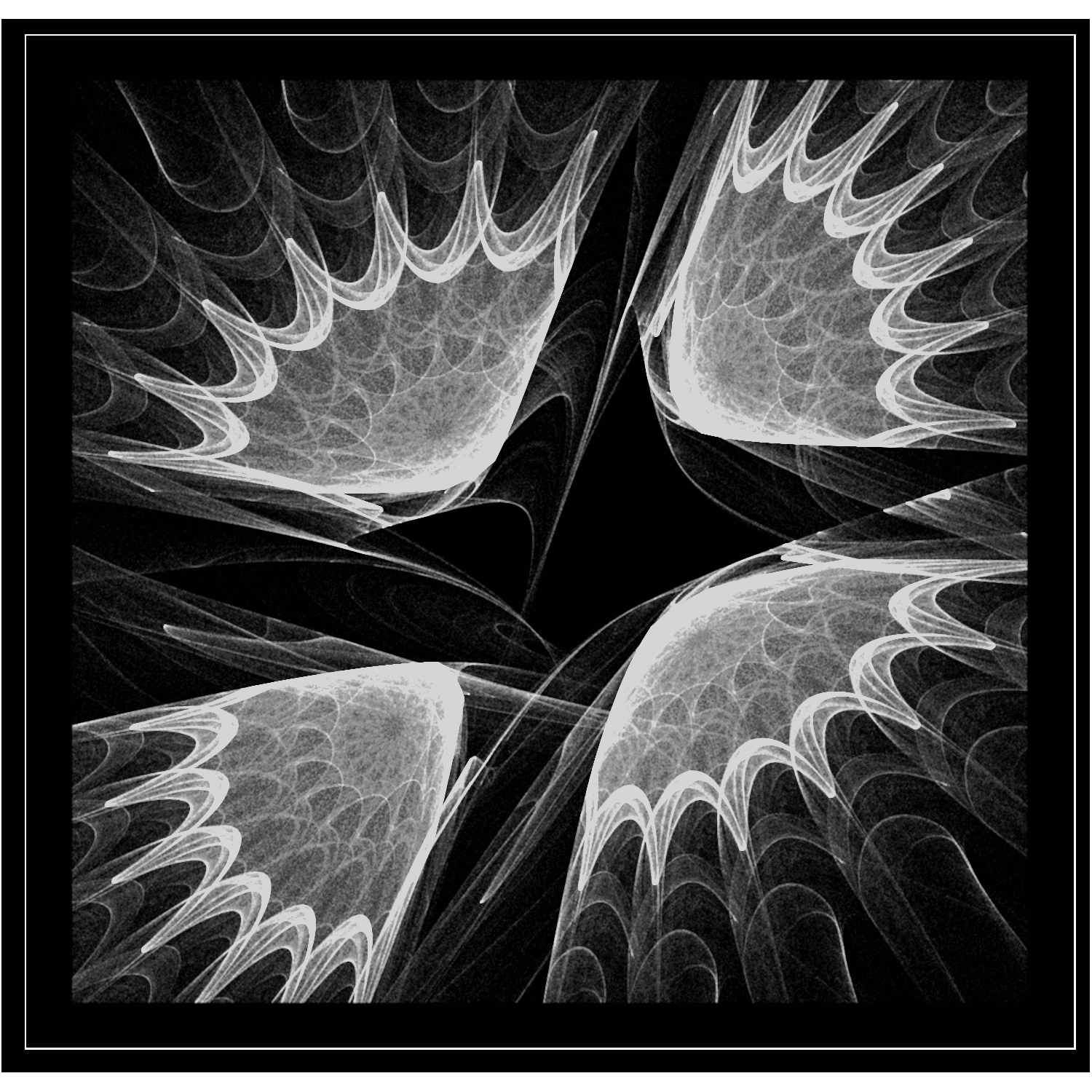
The Omega Point lens invites us to consider the possibility that synchronicity is not merely a coincidence but a calling, a beckoning from the future that guides us towards our ultimate purpose.
Morphic Resonance and the Memory of Nature
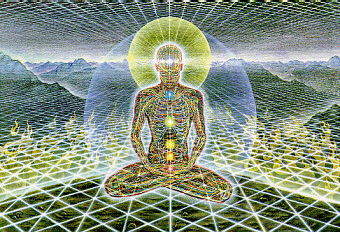
Synchronicity is expressed by the principle of morphic resonance in formative causation described by Rupert Sheldrake. According to Sheldrake in 1994, "the hypothesis of formative causation suggests that self-organizing systems at all levels of complexity including molecules, crystals, cells, tissues, organisms, and societies of organisms are organized by ‘morphic fields’."
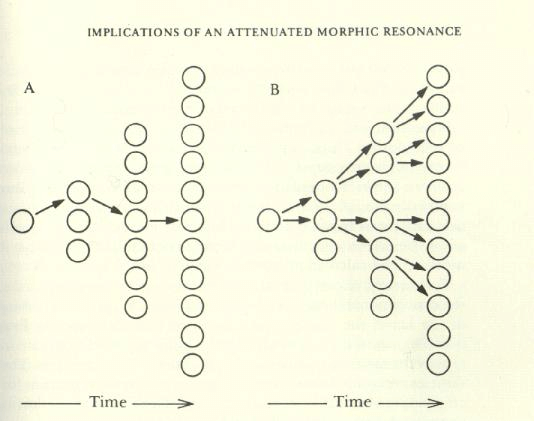
These fields include morphogenetic fields which have to do with the how organisms, molecules, and even crystals inherently remember what previous bodies have done.

The case of the blue tits is an example. Over time, ornithologists noticed that small blue tit birds learned to pierce the tops of milk bottles left on the doorstep in the morning in Great Britain.
The phenomenon was first reported in 1921. By 1947 the behavior had been noticed throughout Europe. Blue tits do not usually travel far from their homes and live only two or three years. In the Netherlands, milk delivery had been all but stopped during the Second World War. When milk delivery resumed in 1947 and 1948, the blue tit behavior also resumed. Sheldrake used this as an example of how organisms remember habits established by previous generations.
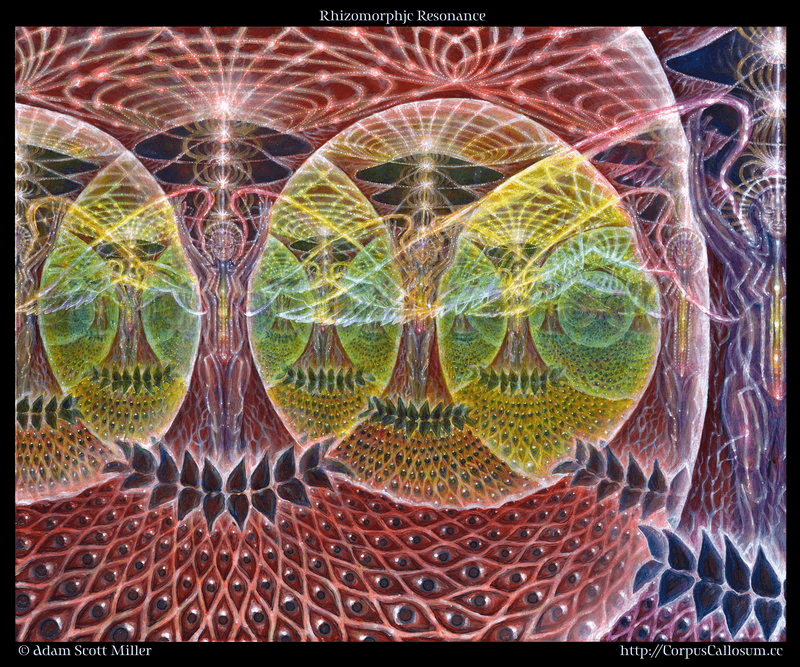
Sheldrake said that space and distance do not matter to morphic resonance, for information and not energy is exchanged. That is, the universal principles of space and causality do not apply. The hypothesis of morphic resonance explained by formative causation explains the patterns and events in nature to be "understood as regulated by inherited habits and not by universal and eternal underlying principles." Mechanistic science after Descartes took for granted that there were universal principles that were inviolable, and that the task of science was to discover these principles.
Thus memory was ‘stored’ in cells in the brain or body; Sheldrake said this was not true; memory is part of a collective memory of the species inherited from former members of the species. In 1994 Sheldrake said that this is a concept similar to Jung’s concept of the collective unconscious:
The hypothesis of morphic resonance enables the collective unconscious to be seen not just as a human phenomenon but as an aspect of a far more general process by which habits are inherited through nature.
Sheldrake commented that these two hypotheses – of formative causation and of morphic resonance – may seem mysterious, but the mechanistic idea that there are laws of mathematics that transcend nature are more mysterious, as they also rely on a metaphysical explanation for what happens in nature.
Chaos Theory and the Butterfly Effect
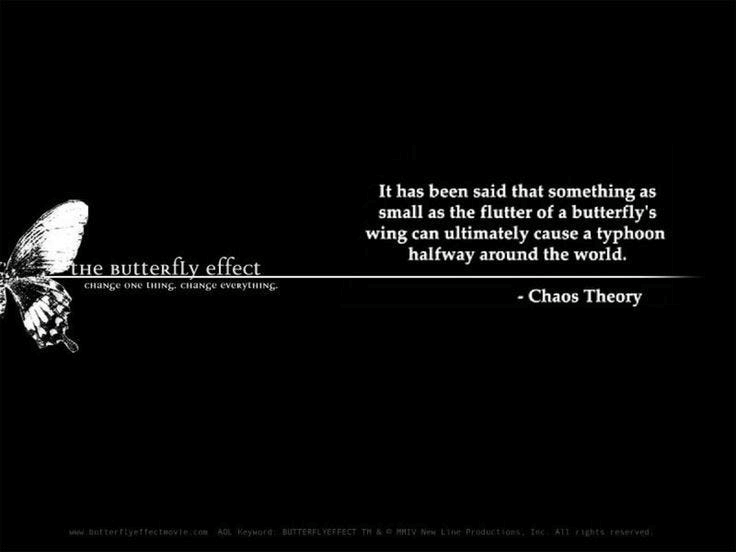
Chaos theory studies complex systems where small changes in initial conditions yield large-scale, unpredictable outcomes, exemplified by the "butterfly effect." In synchronicity, chaos theory posits that insignificant events can trigger meaningful coincidences, reflecting the universe's nonlinearity and sensitivity to initial conditions.
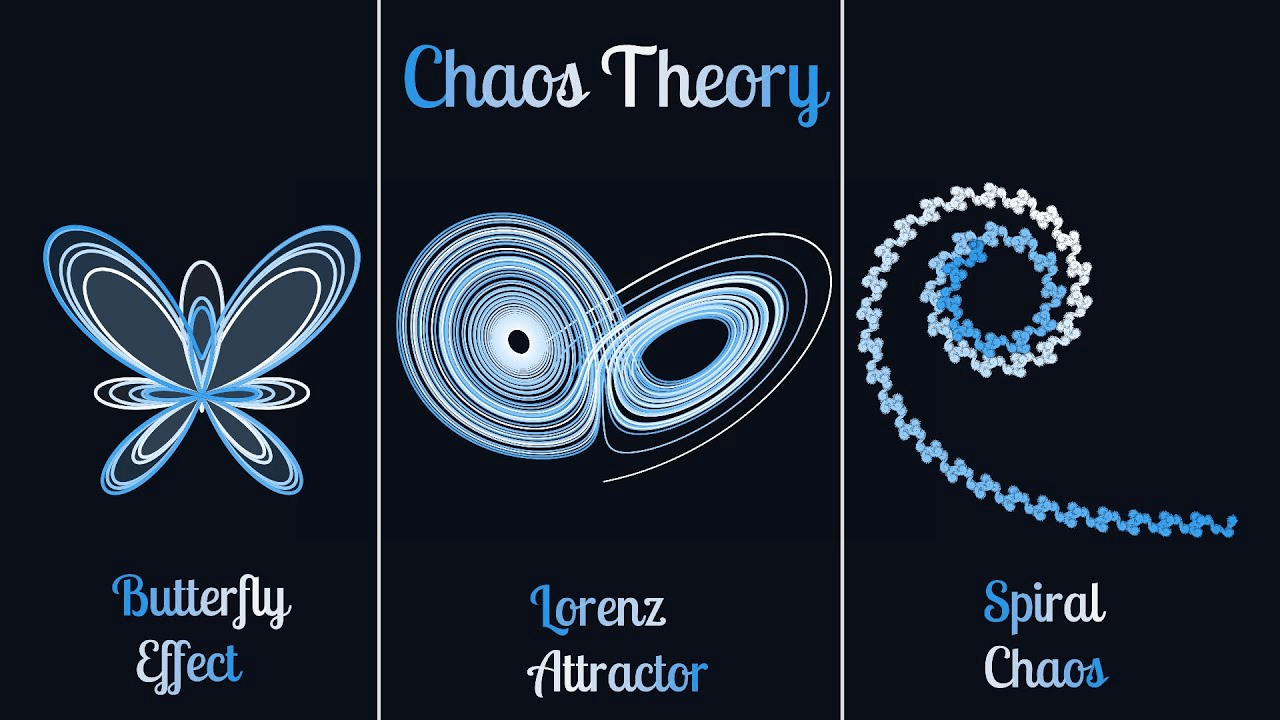
In 1987 Ernst Laszlo formulated a hypothesis about mathematical wave functions that assemble themselves into forms and nested patterns or psi-fields. Laszlo theorized that once patterns are made, they probably will occur again. This is an expression of creativity in the universe, or cosmos. In 2003, a biologist, Richard J. Bird, challenged the dictum of evolutionary biology, that random selection is order arising from disorder. Mathematically speaking, randomness is order.
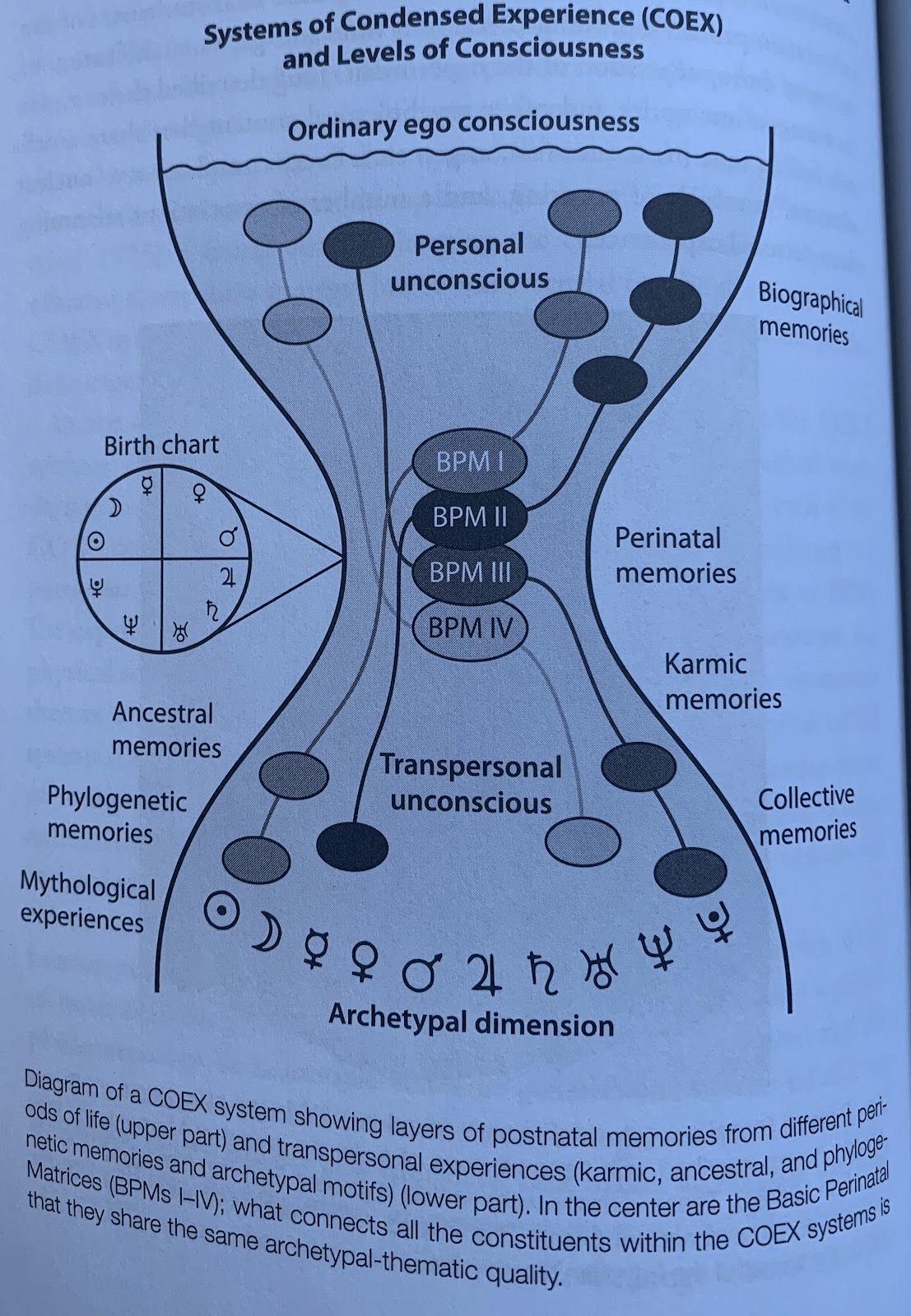
Since the Enlightenment, biological science has ignored and diminished coincidence, chance, and chaos, and has thus disenfranchised those, like Jung, who argued for meaning in coincidence and chance. Bird stated that chaos implies an endless order. Evolutionary biology rests on the assumption that although events are fundamentally random, some are selected because they are better adapted than others to the surrounding world. Bird said that synchronicity can be explained if we view the world not as random-selective, but as iterative-sequential. In a world view that is iterative-sequential, coincidence would be expected. His theory would then encompass the presence of coincidence and chance as being part of a mathematical recursiveness, an order of infinity.
Chaos theory encourages embracing unpredictability, recognizing transformative potential in seemingly minor moments. Attuning to nonlinear connections helps us perceive deeper patterns and purpose amidst the universe's complexity. Synchronicity becomes a compass, guiding our understanding of our place within the ever-unfolding fabric of reality.
To Wrap Up
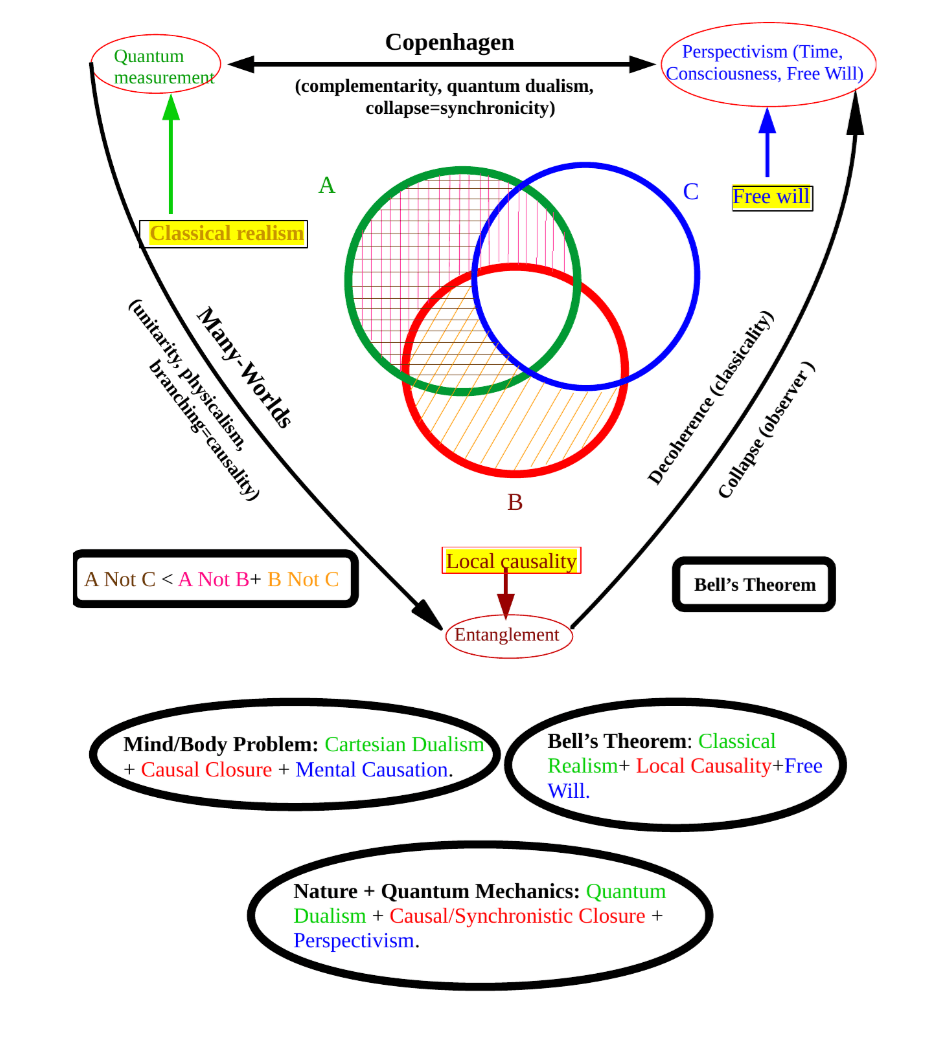
Synchronicity emerges as a fundamental expression of the non-local, non-hierarchical, and inherently generative nature of reality, inviting us to recognize the unity that underlies the apparent diversity of our world. As we continue to explore the nature of synchronicity, we may discover that the boundaries between mind and matter, self and other, self (atman) and no-self (anatman) and the individual and the cosmos are far more permeable than we ever imagined.
Maybe this is just the beginning of a deep inquiry into the topic, we believe that these lenses provide a solid foundation for further investigation and may inspire new avenues of research and contemplation.